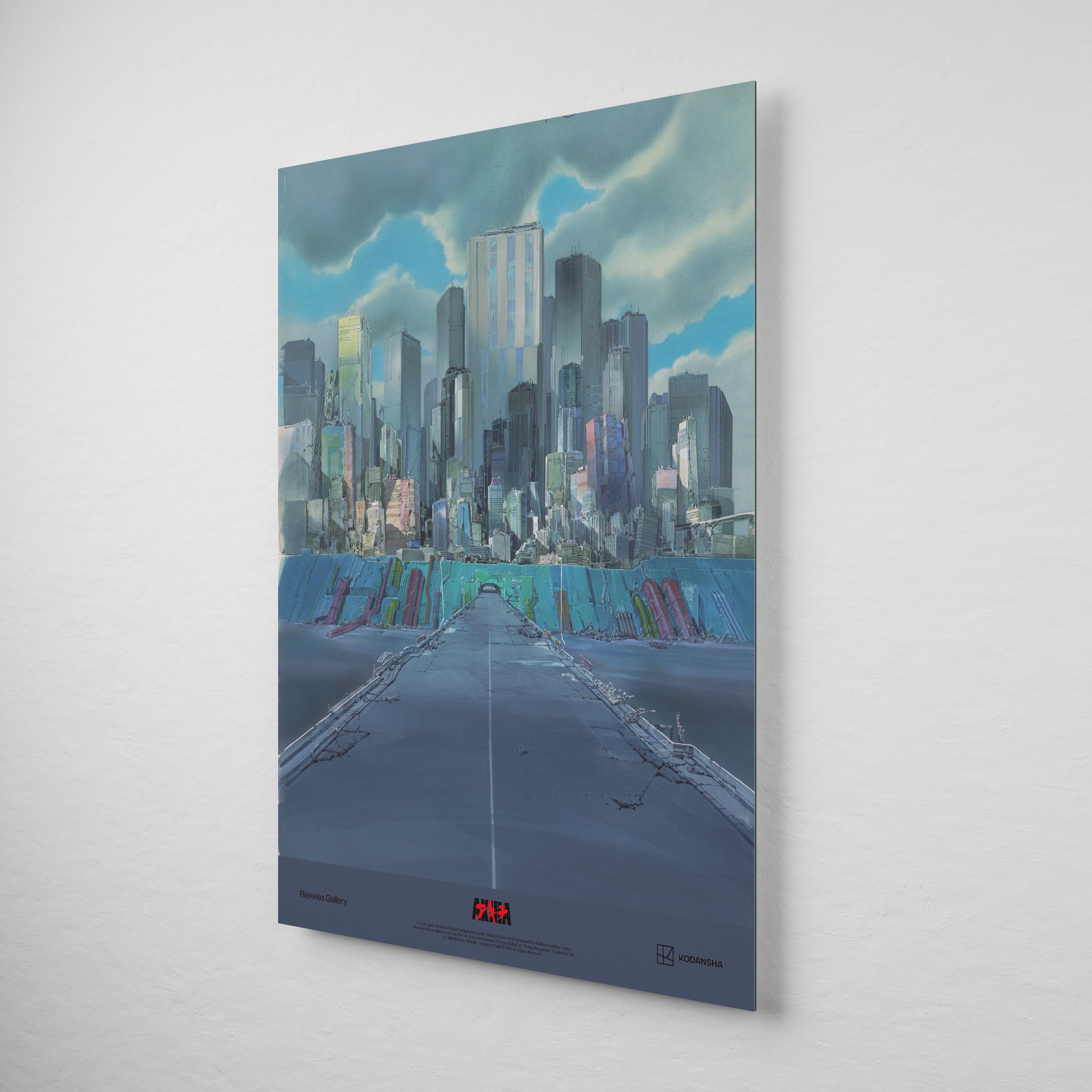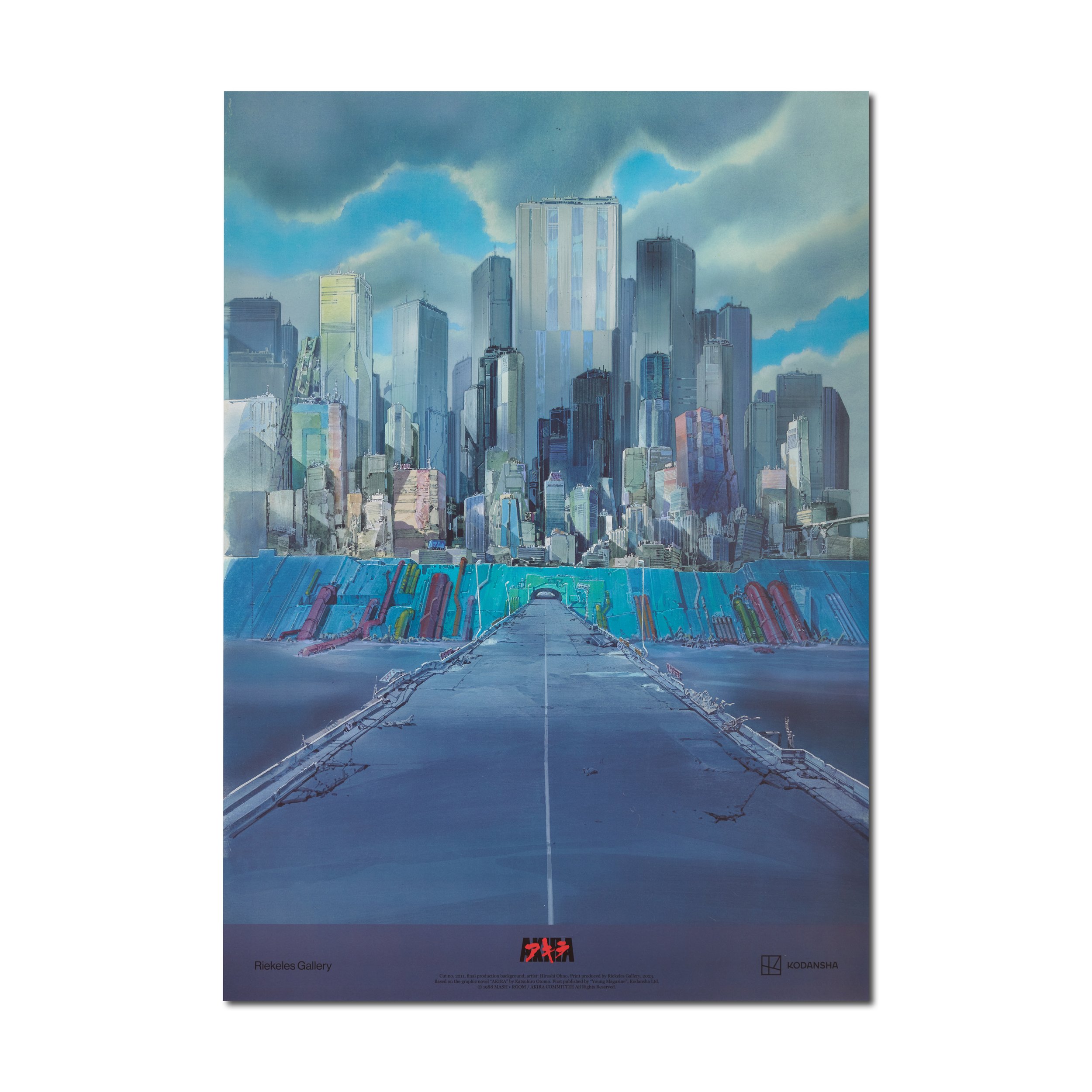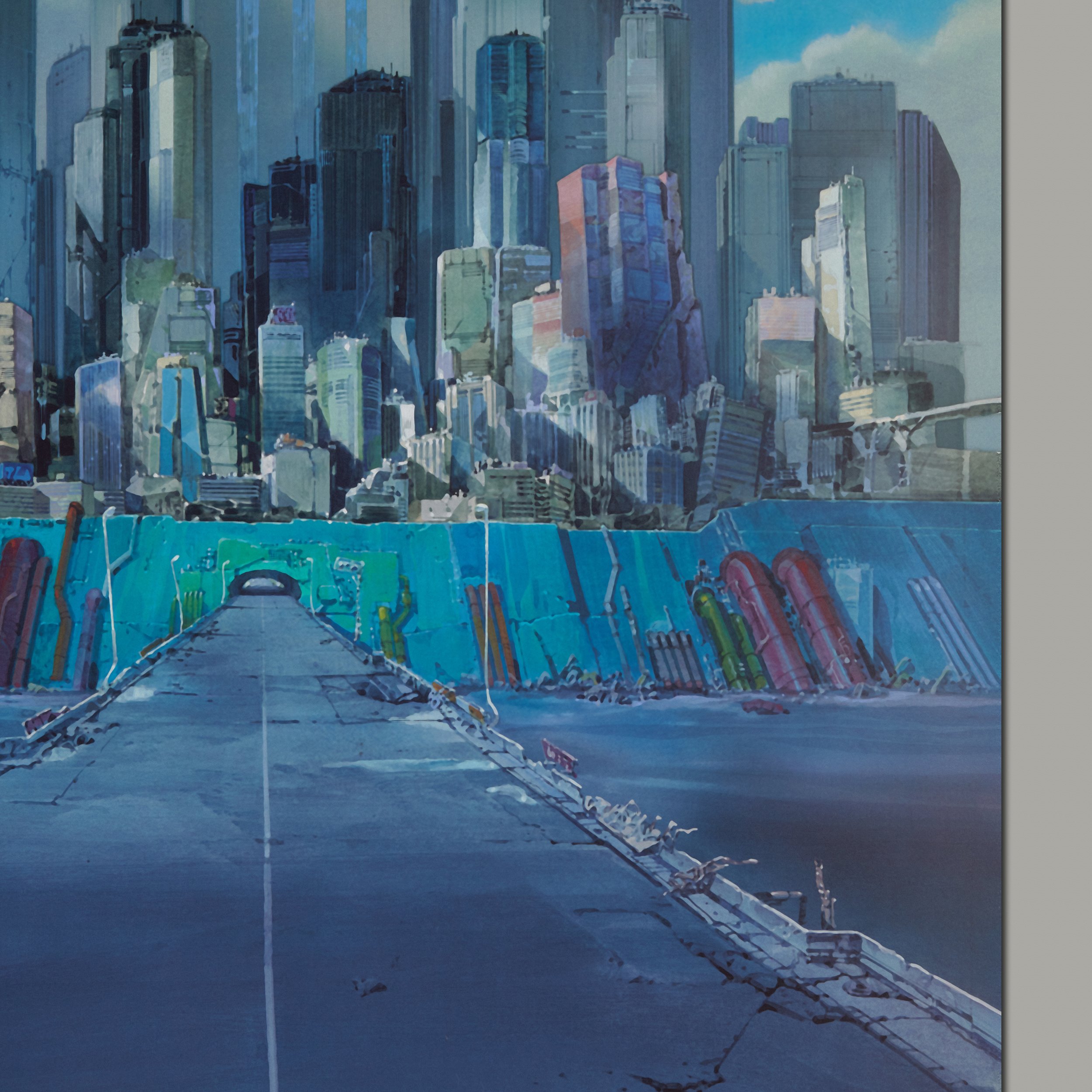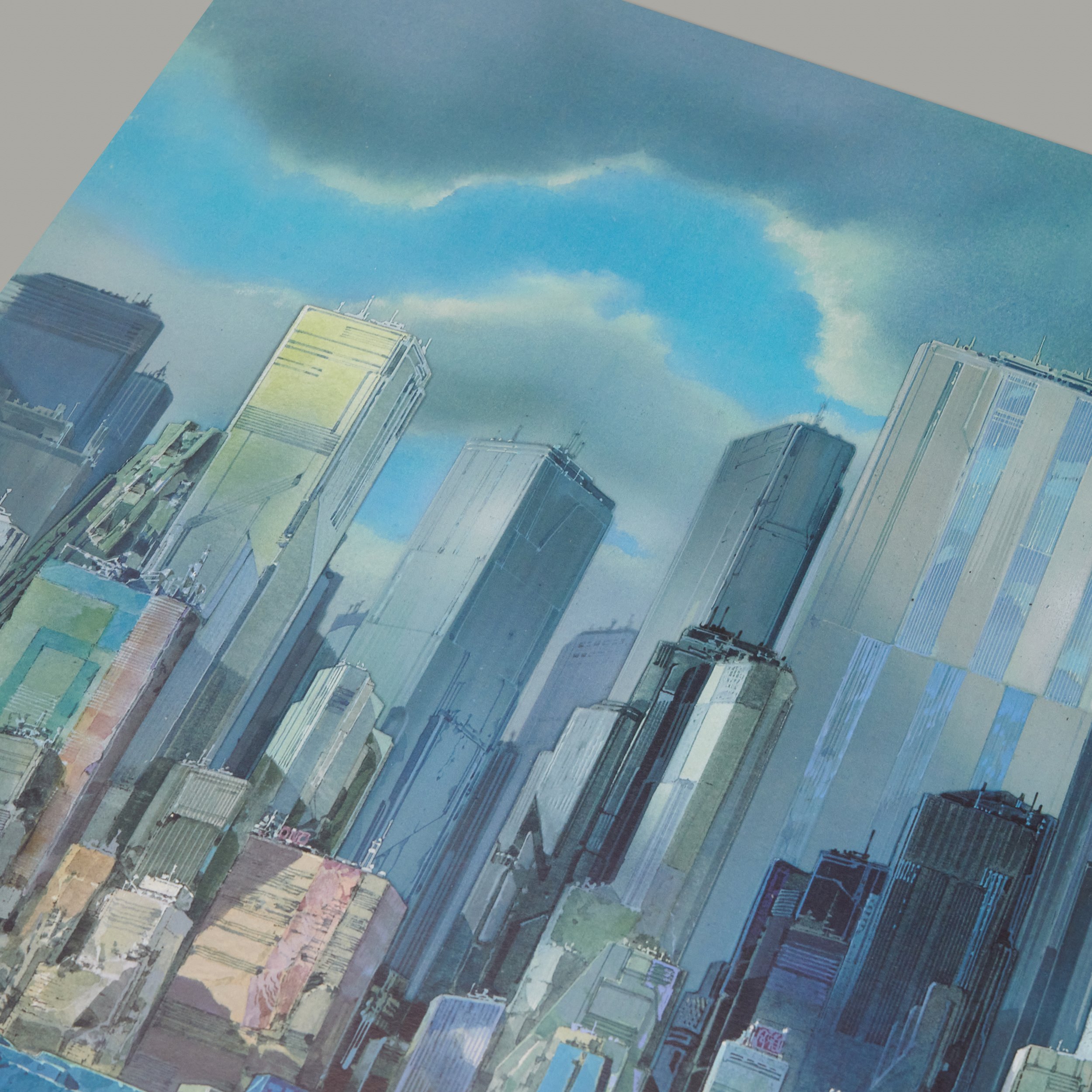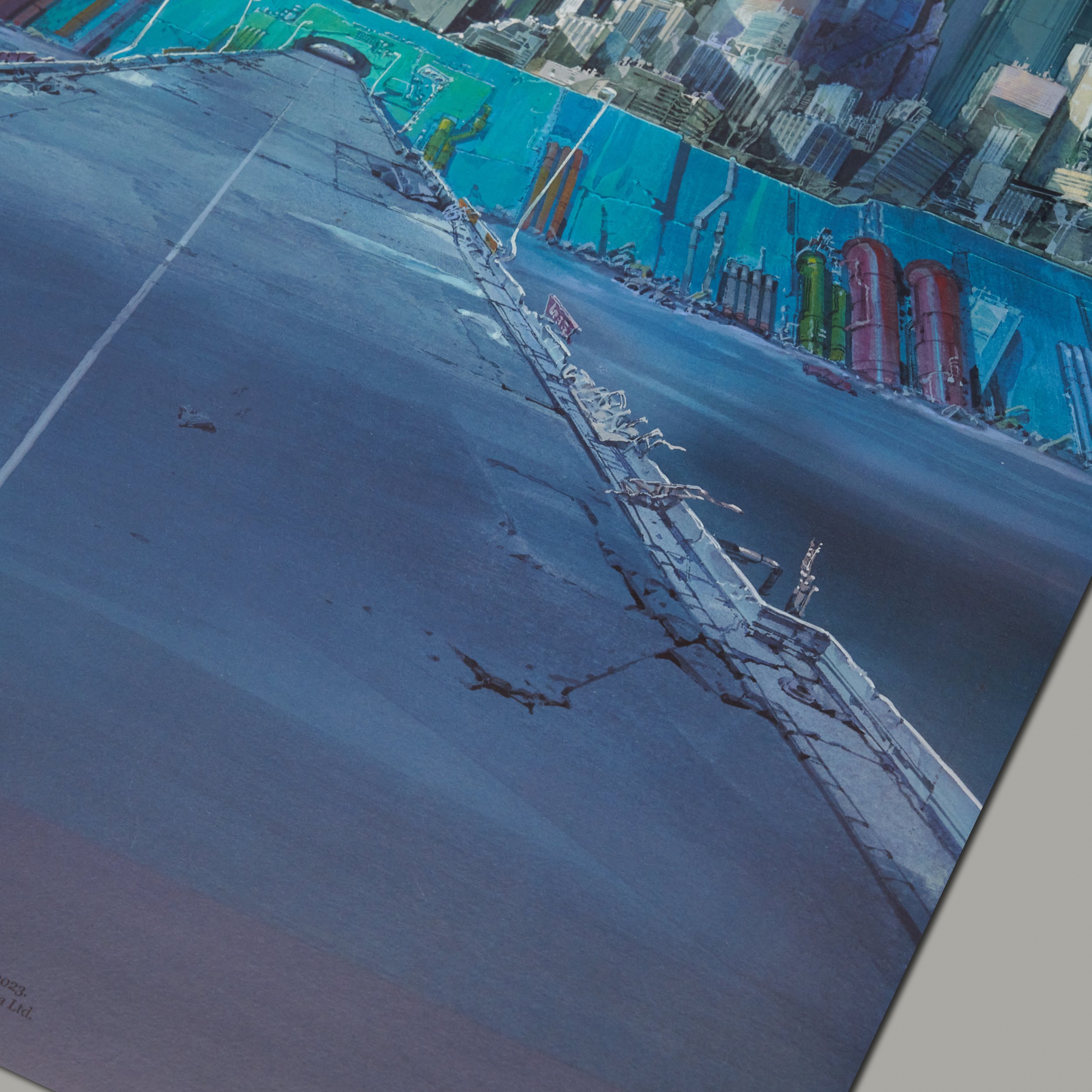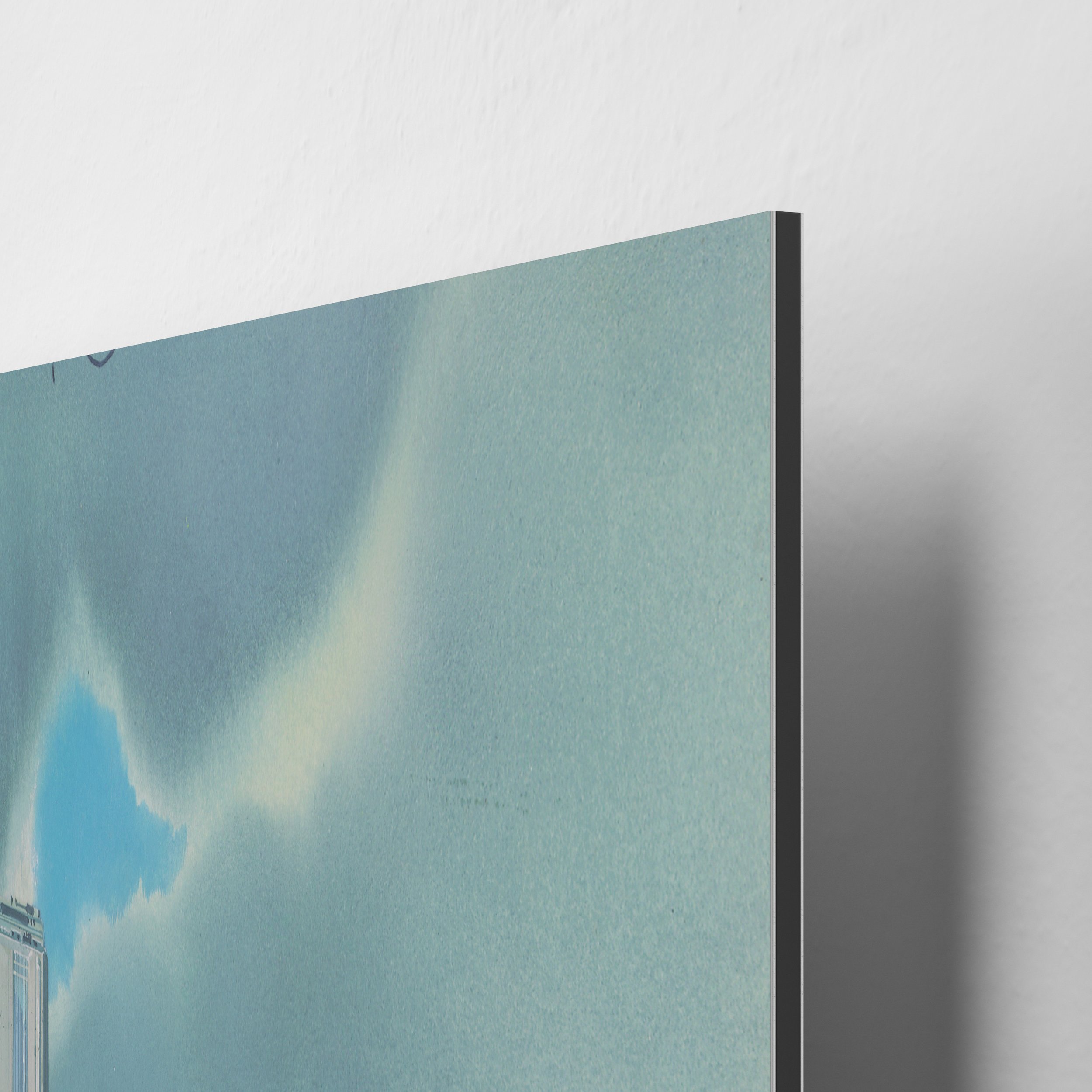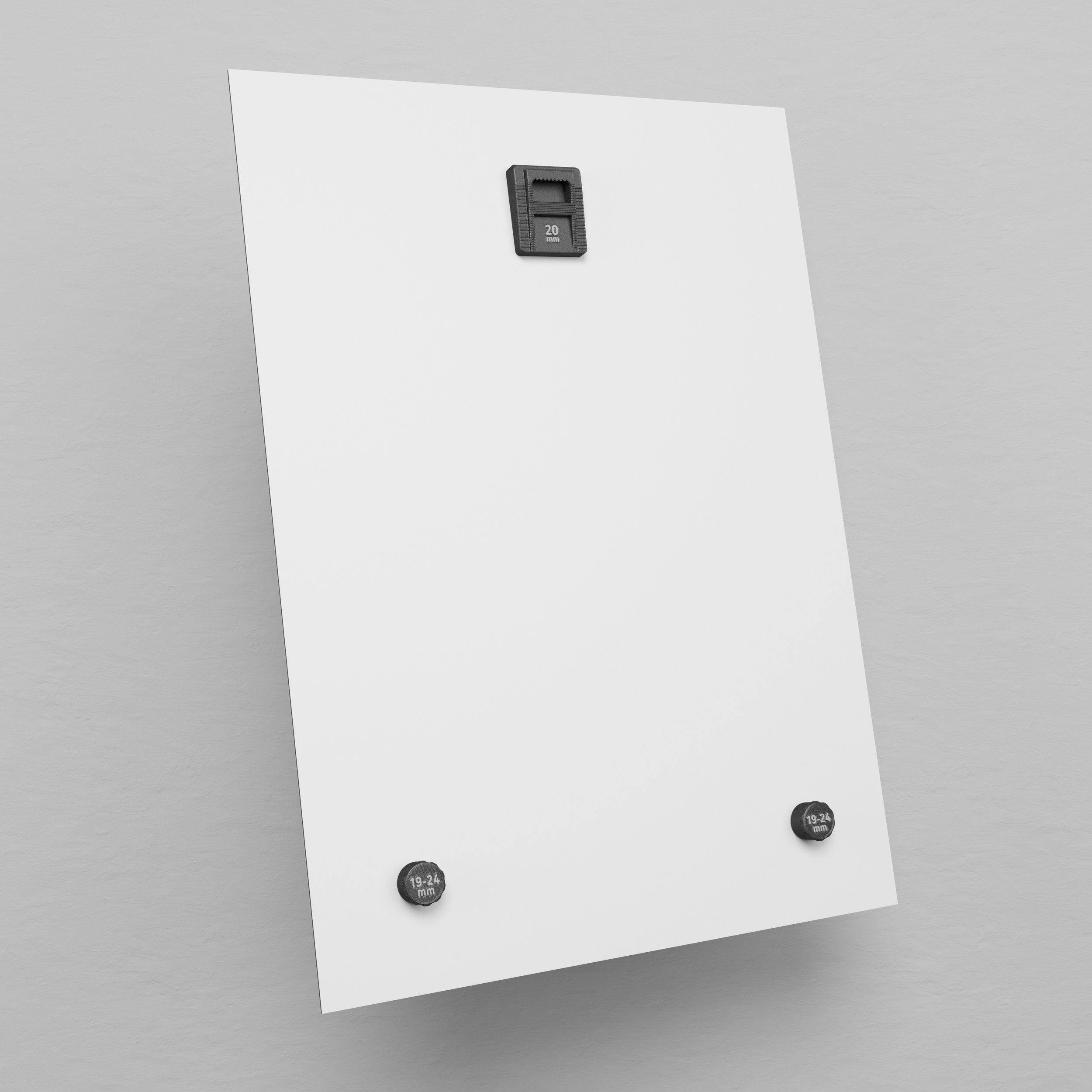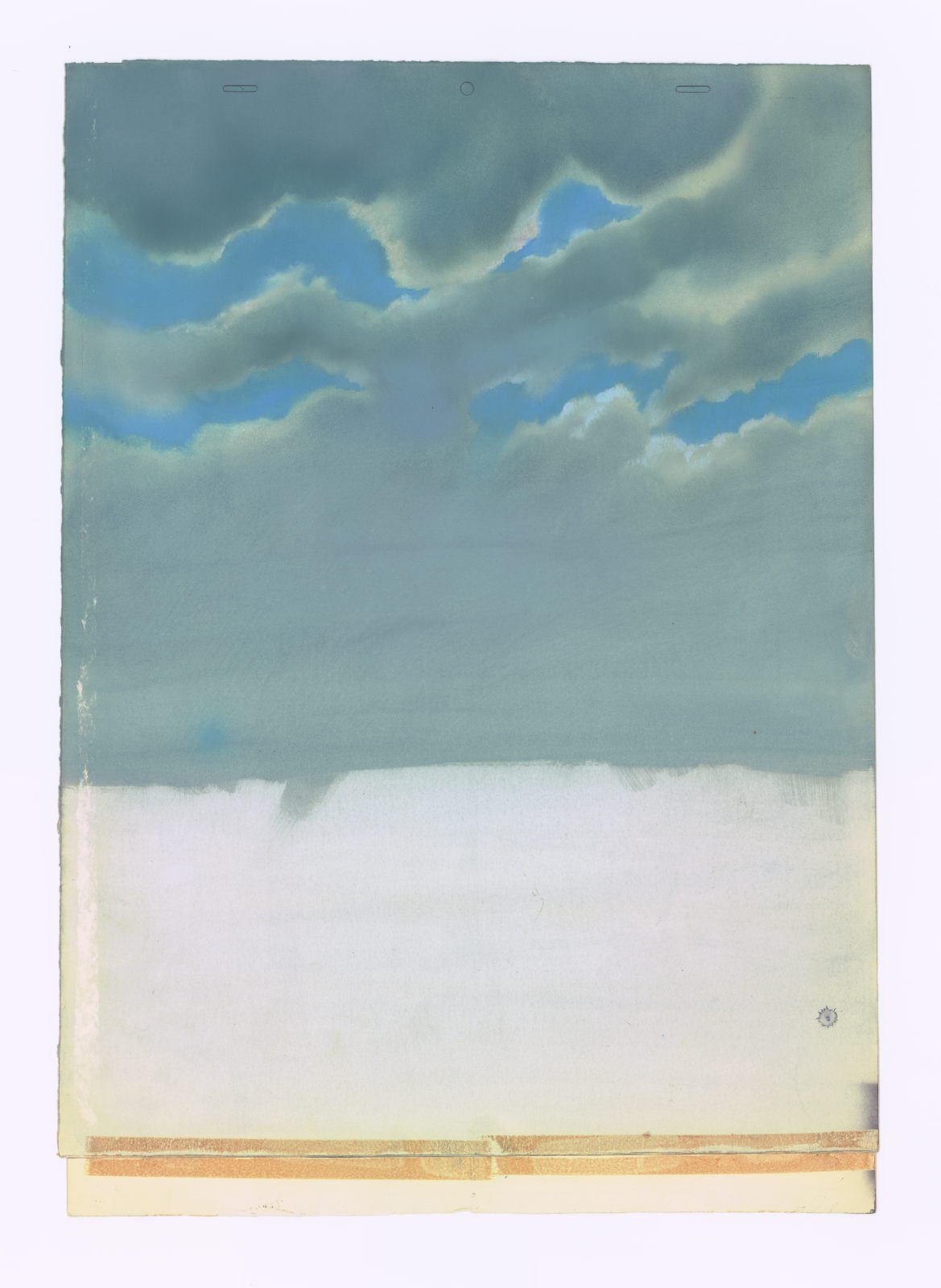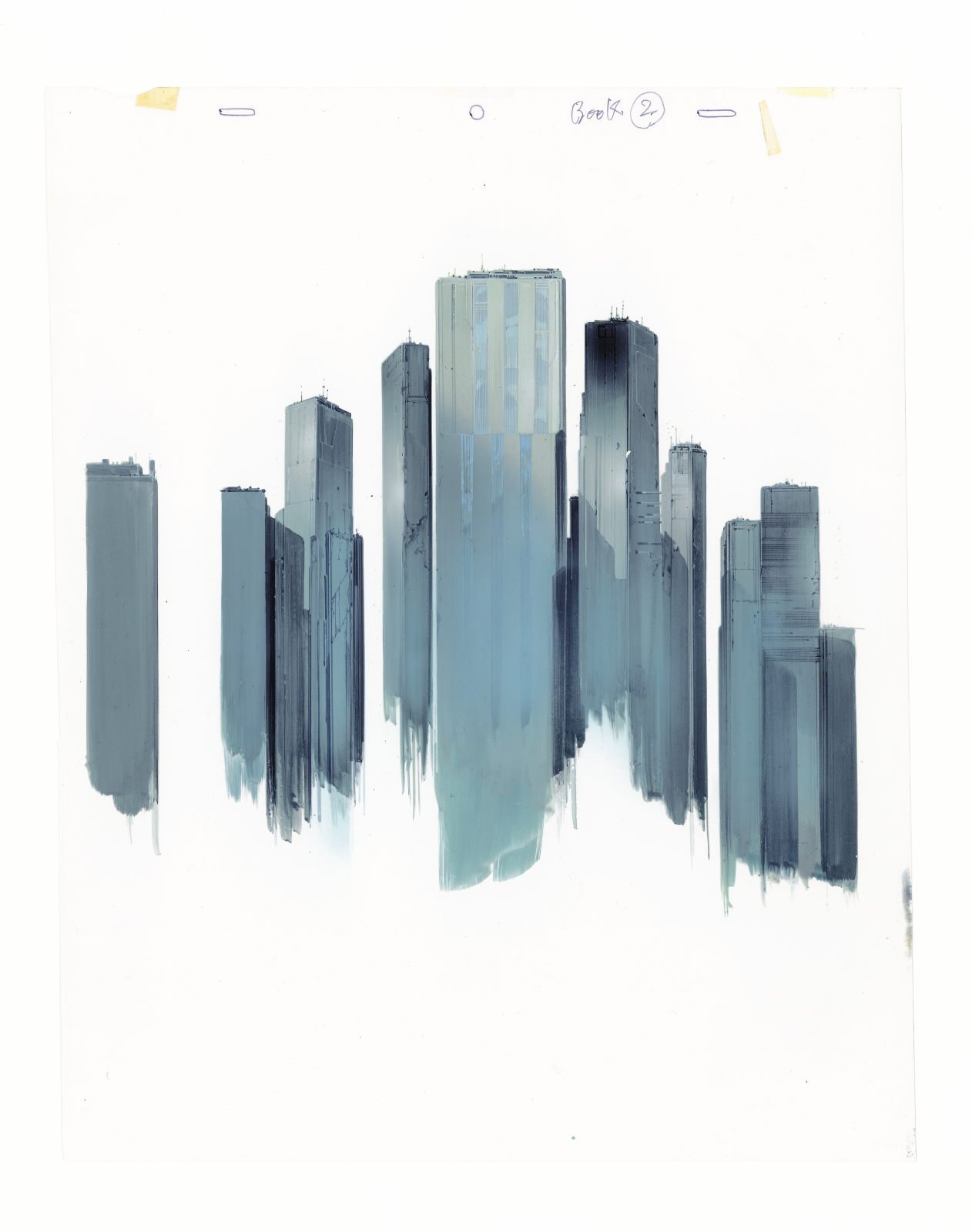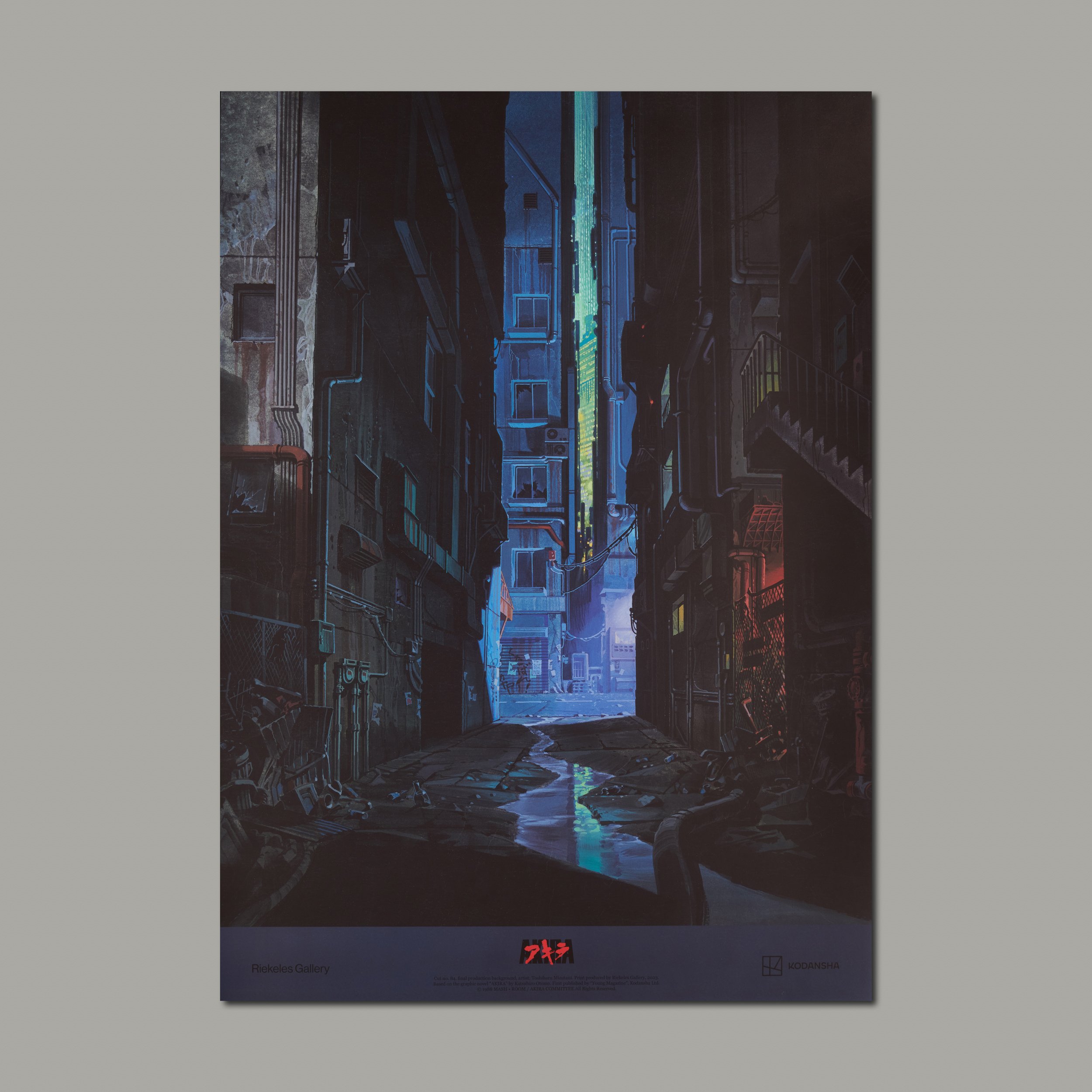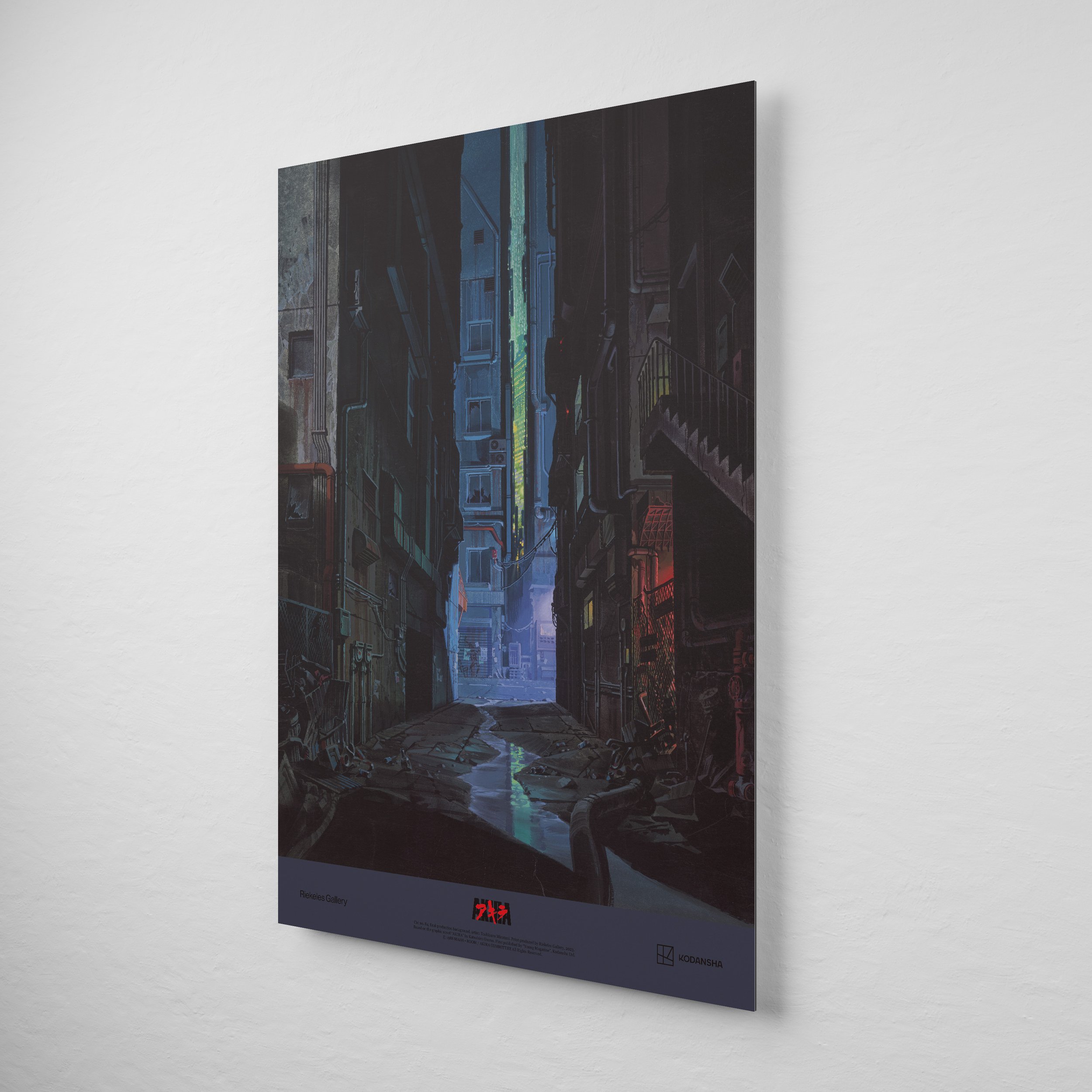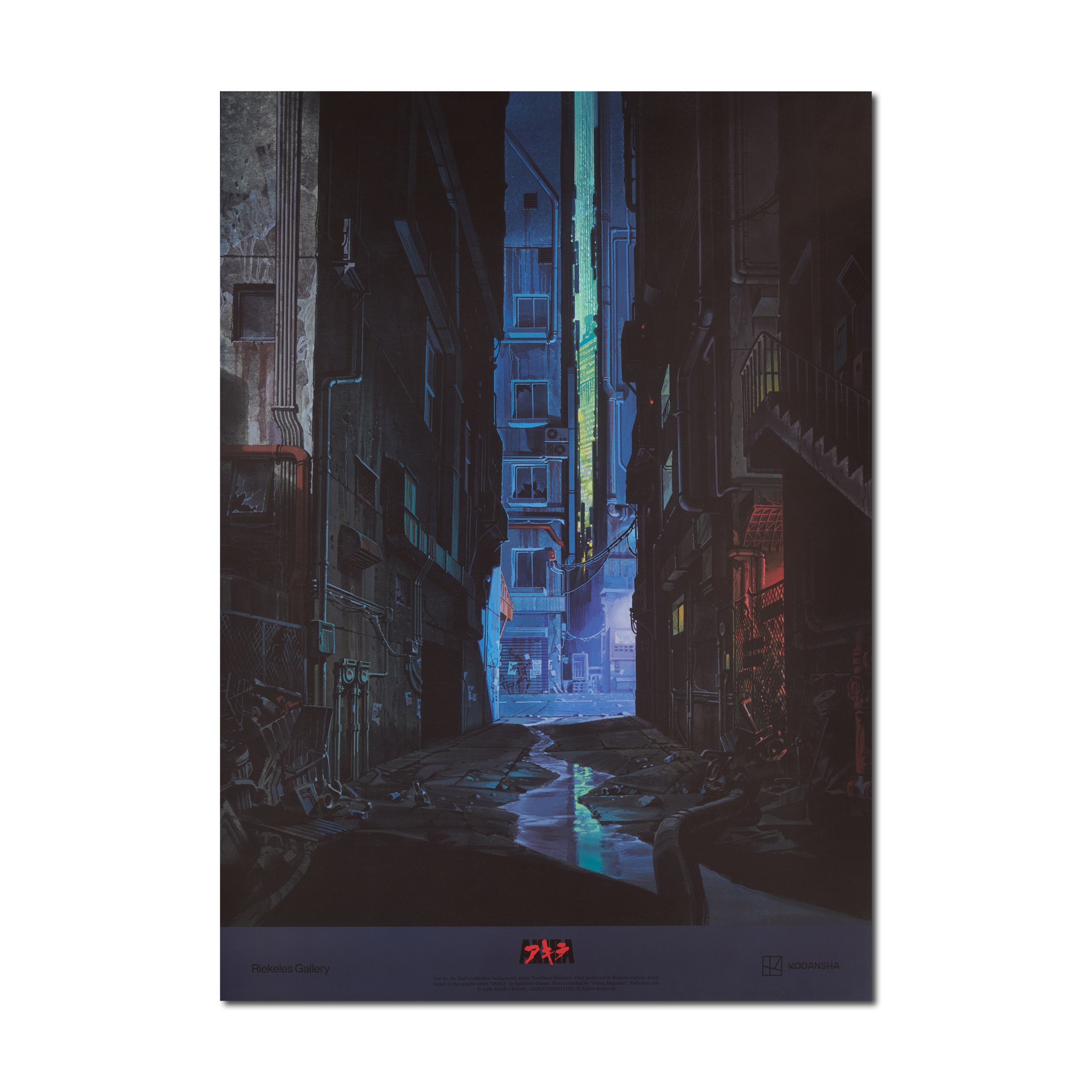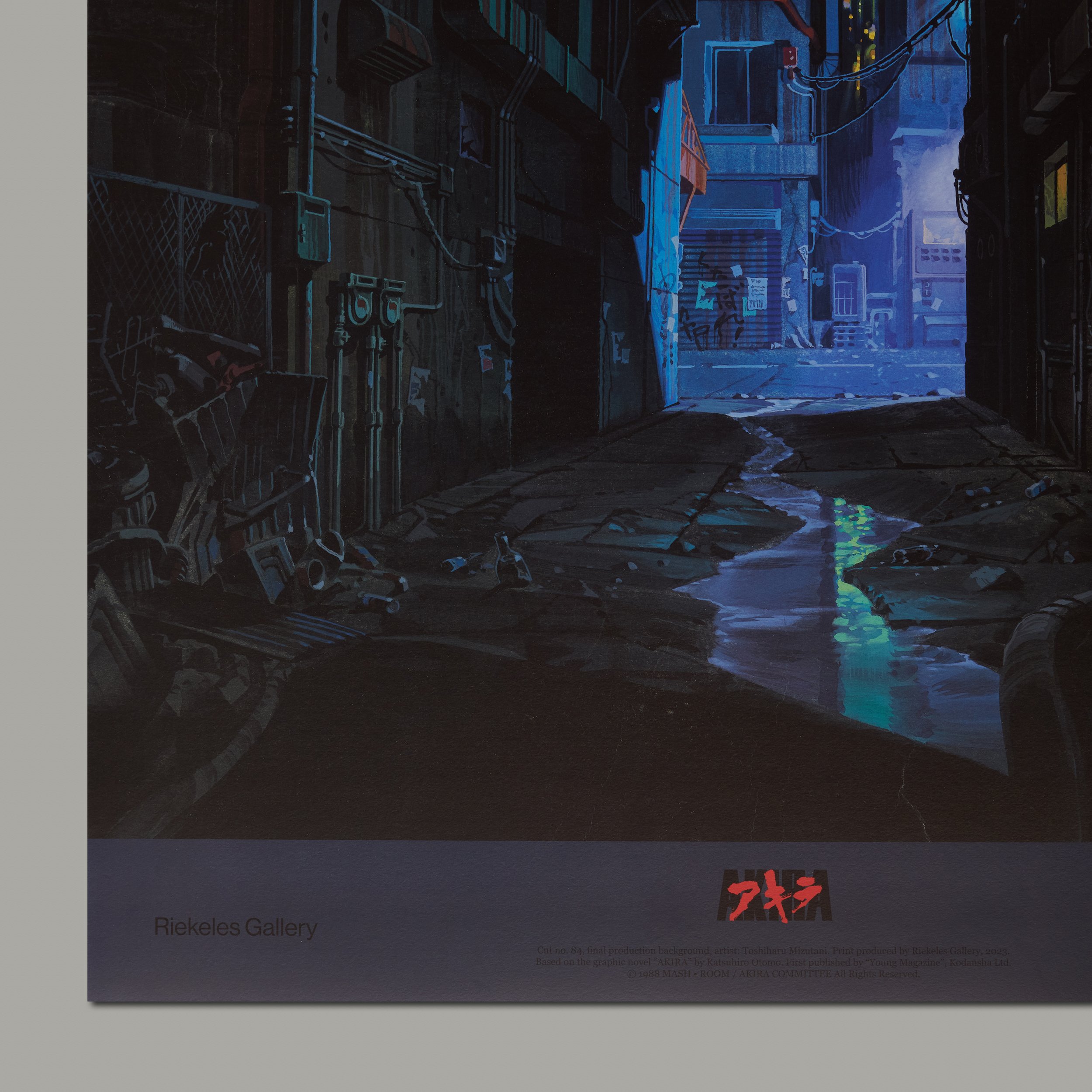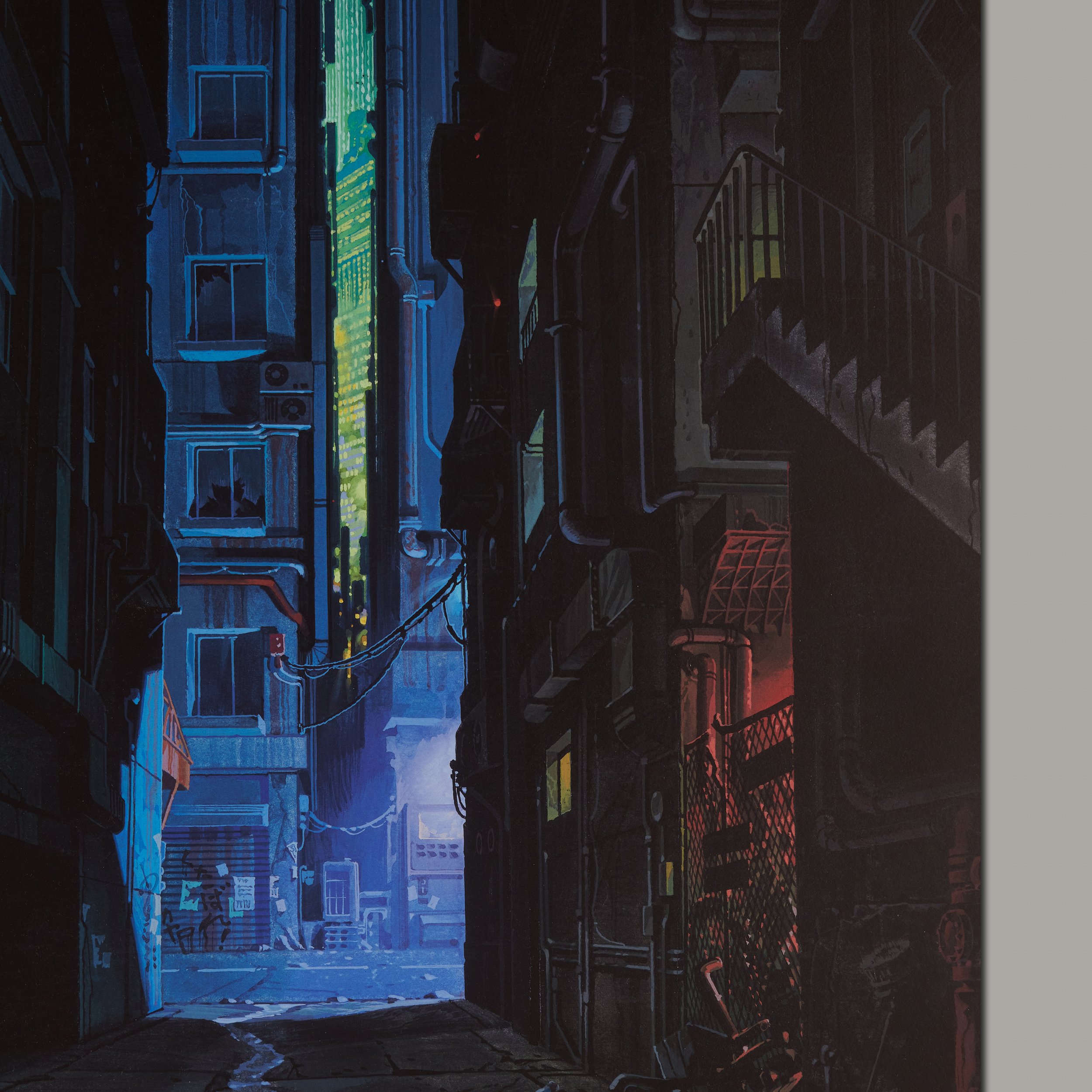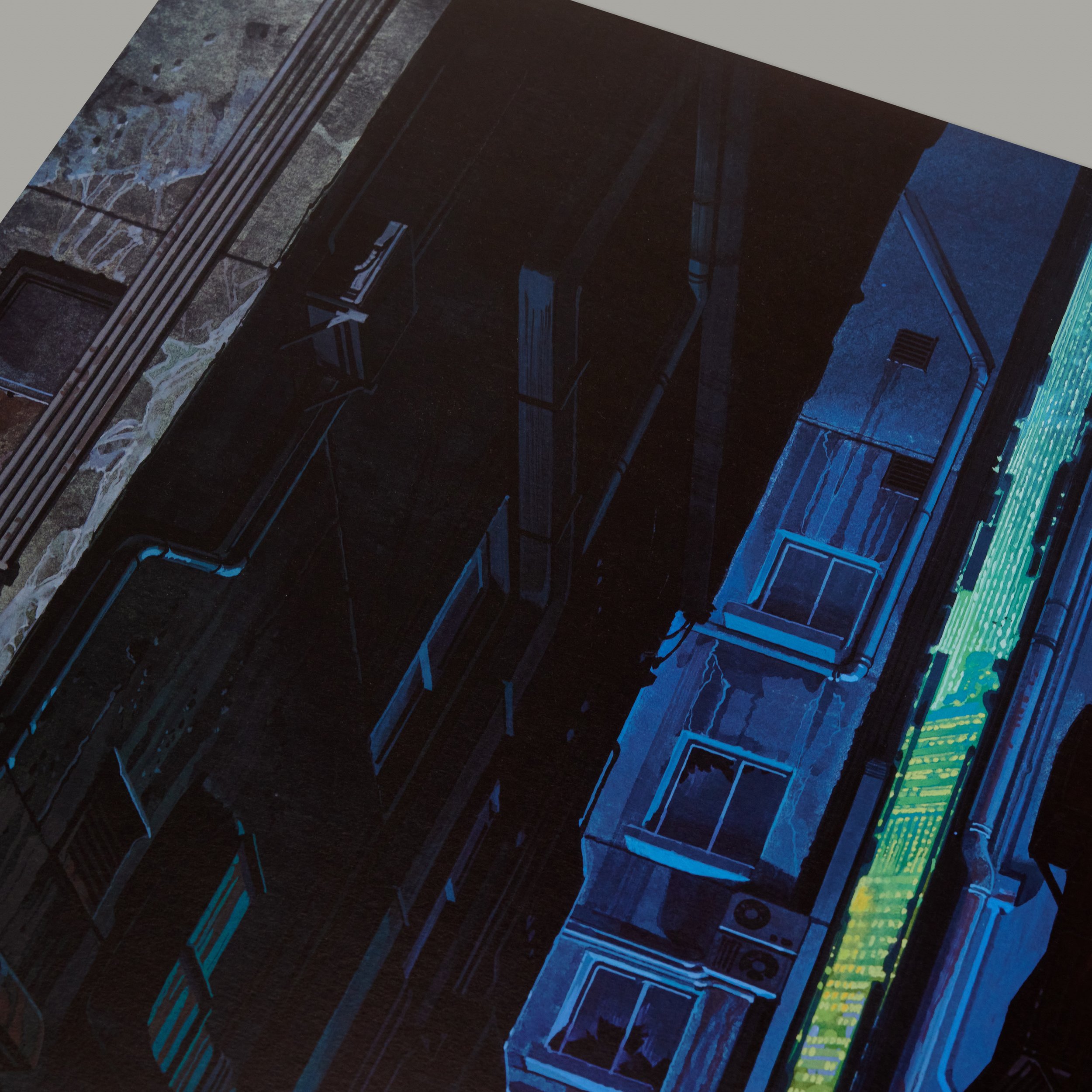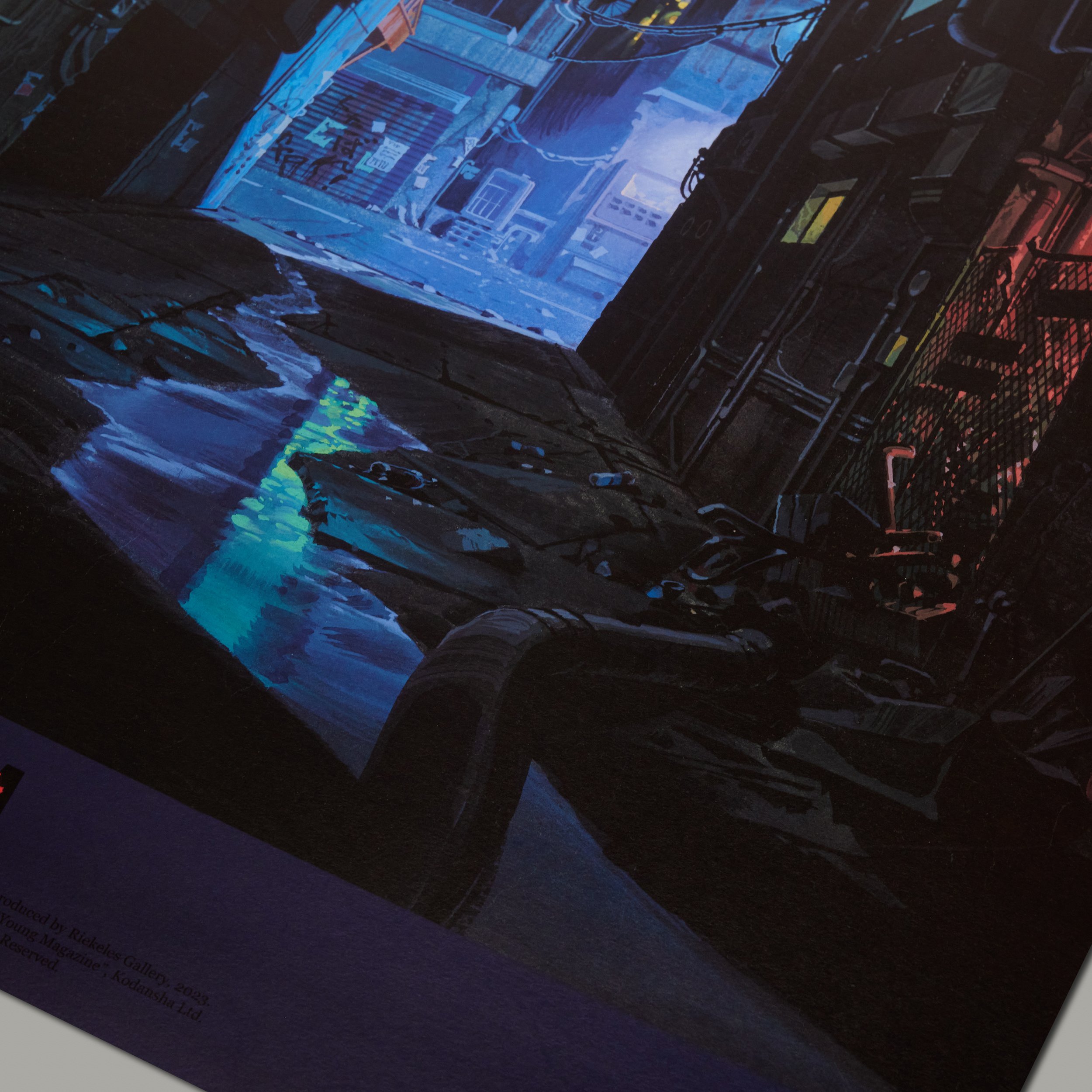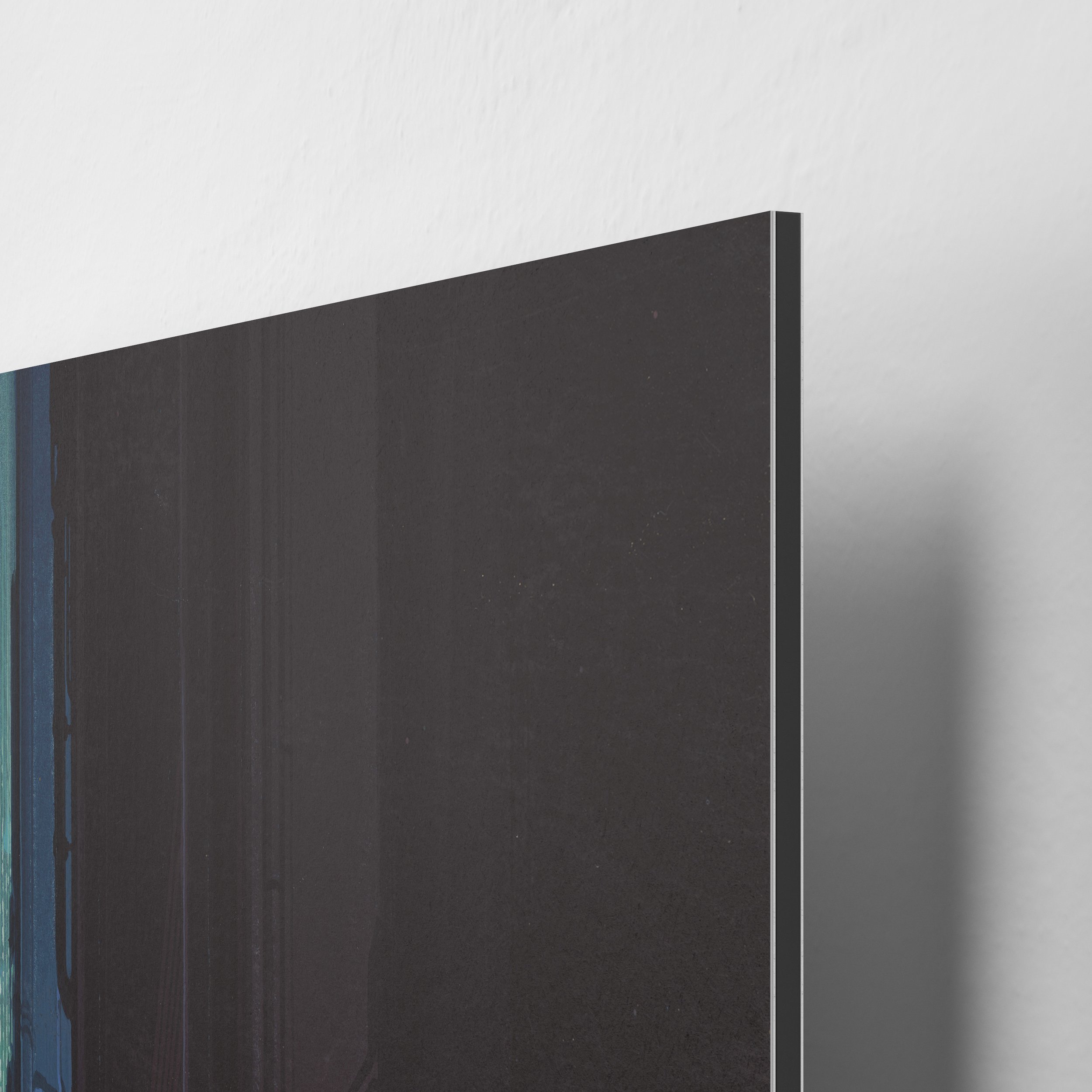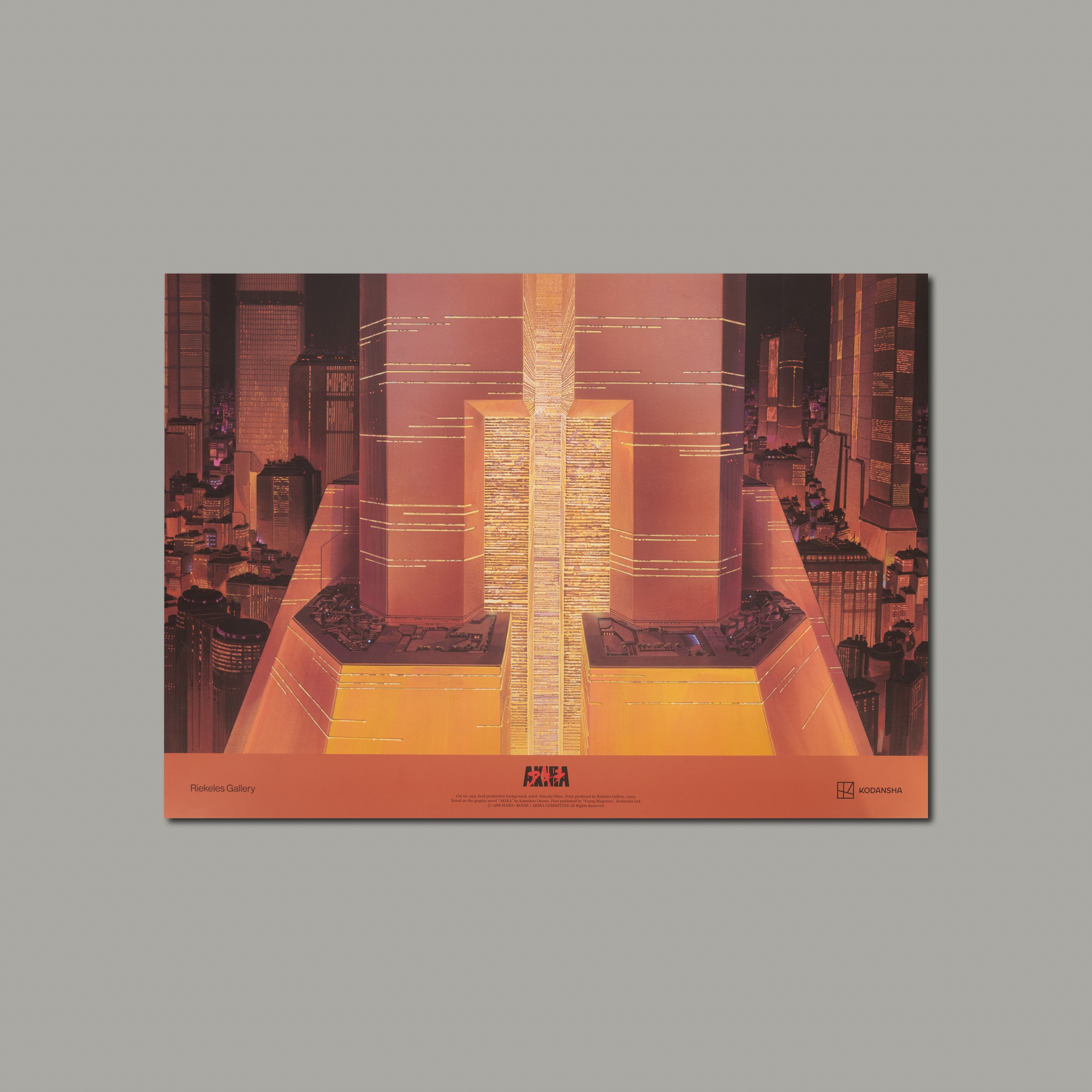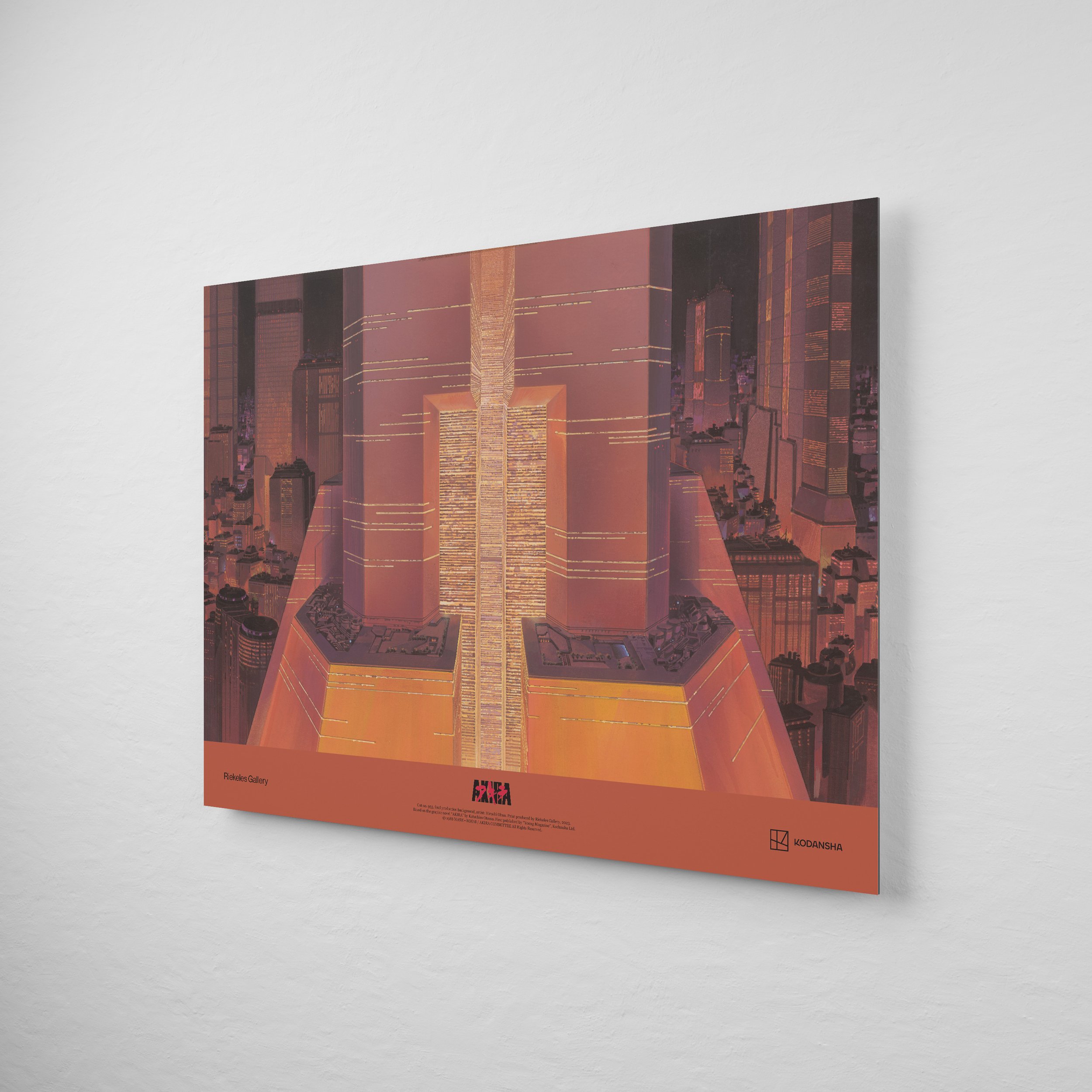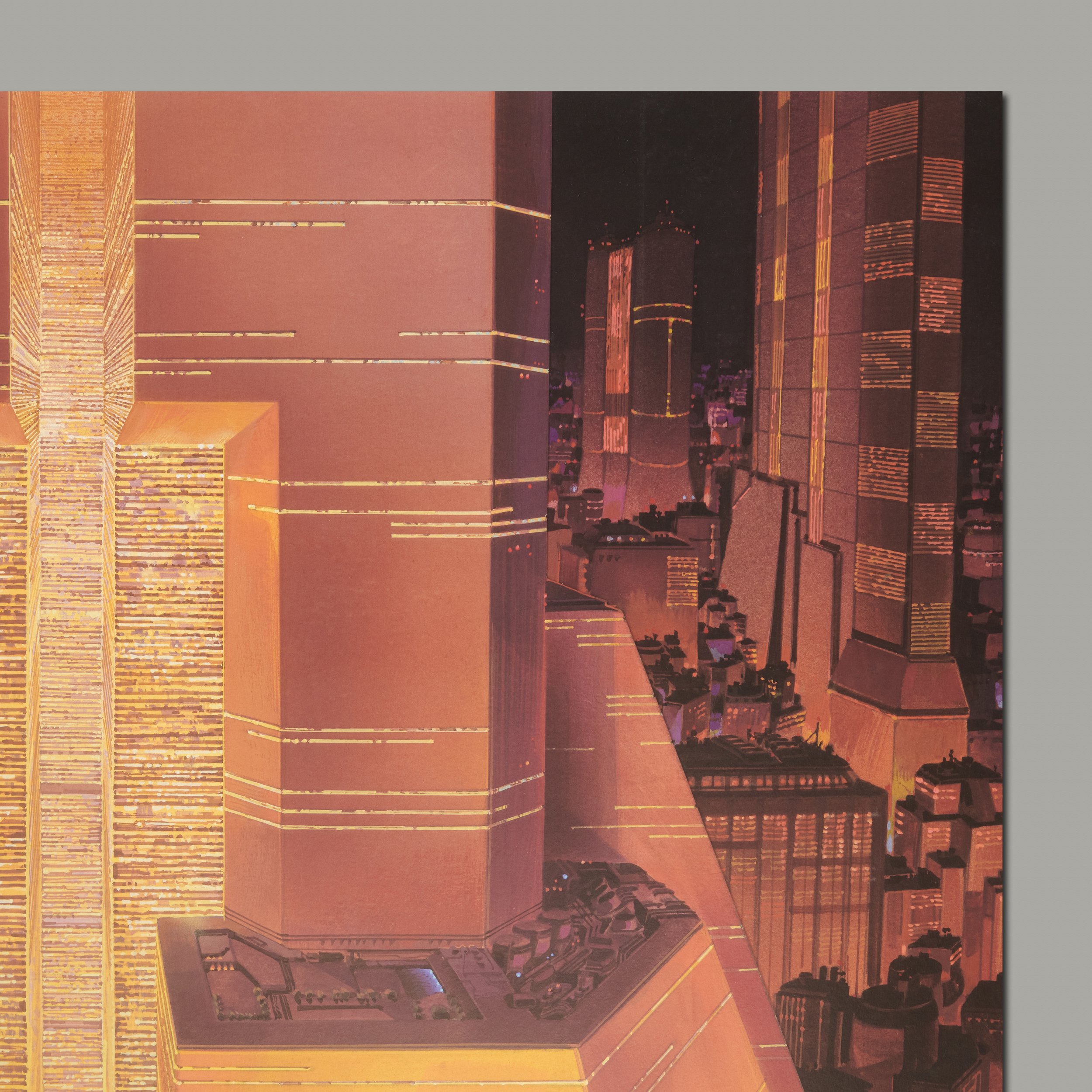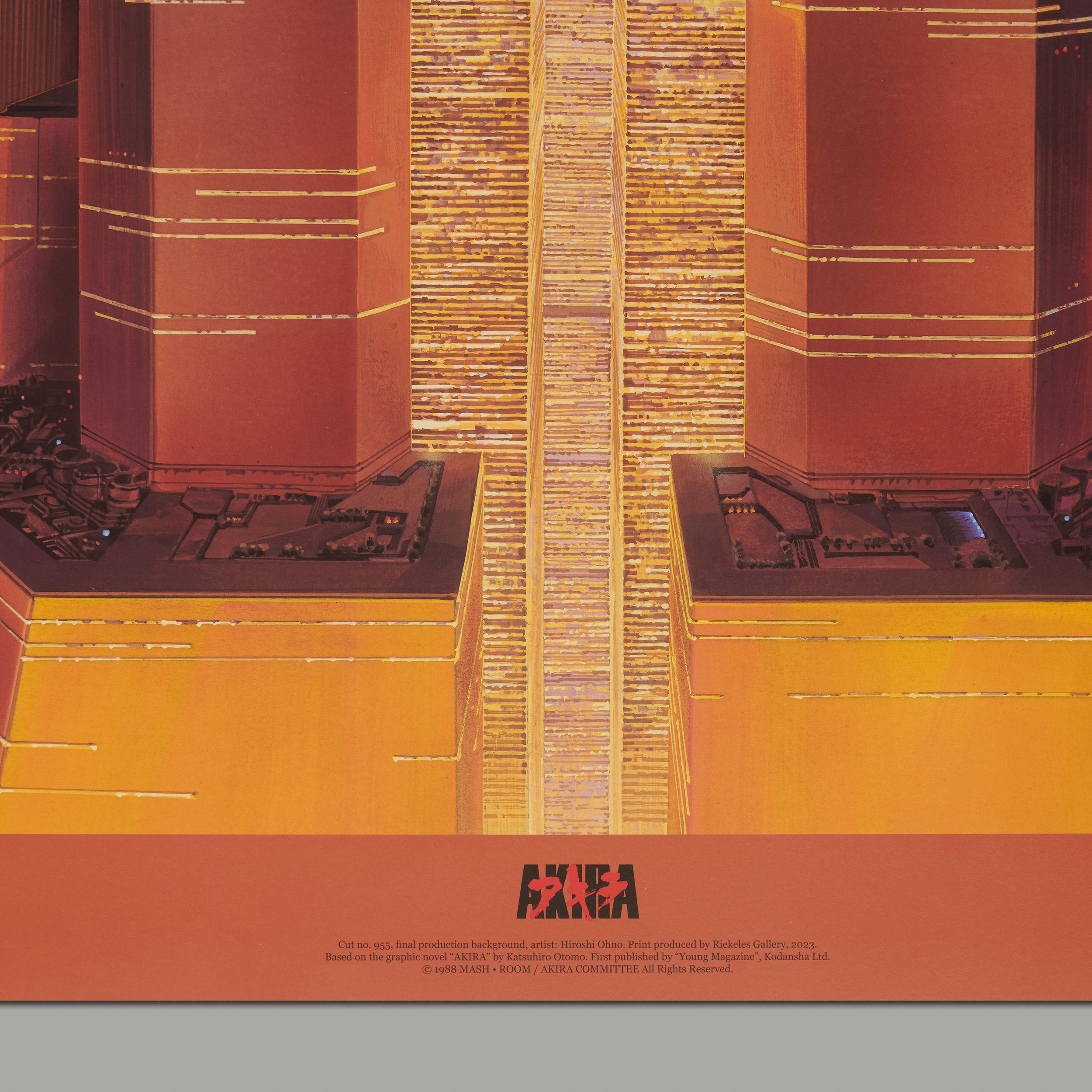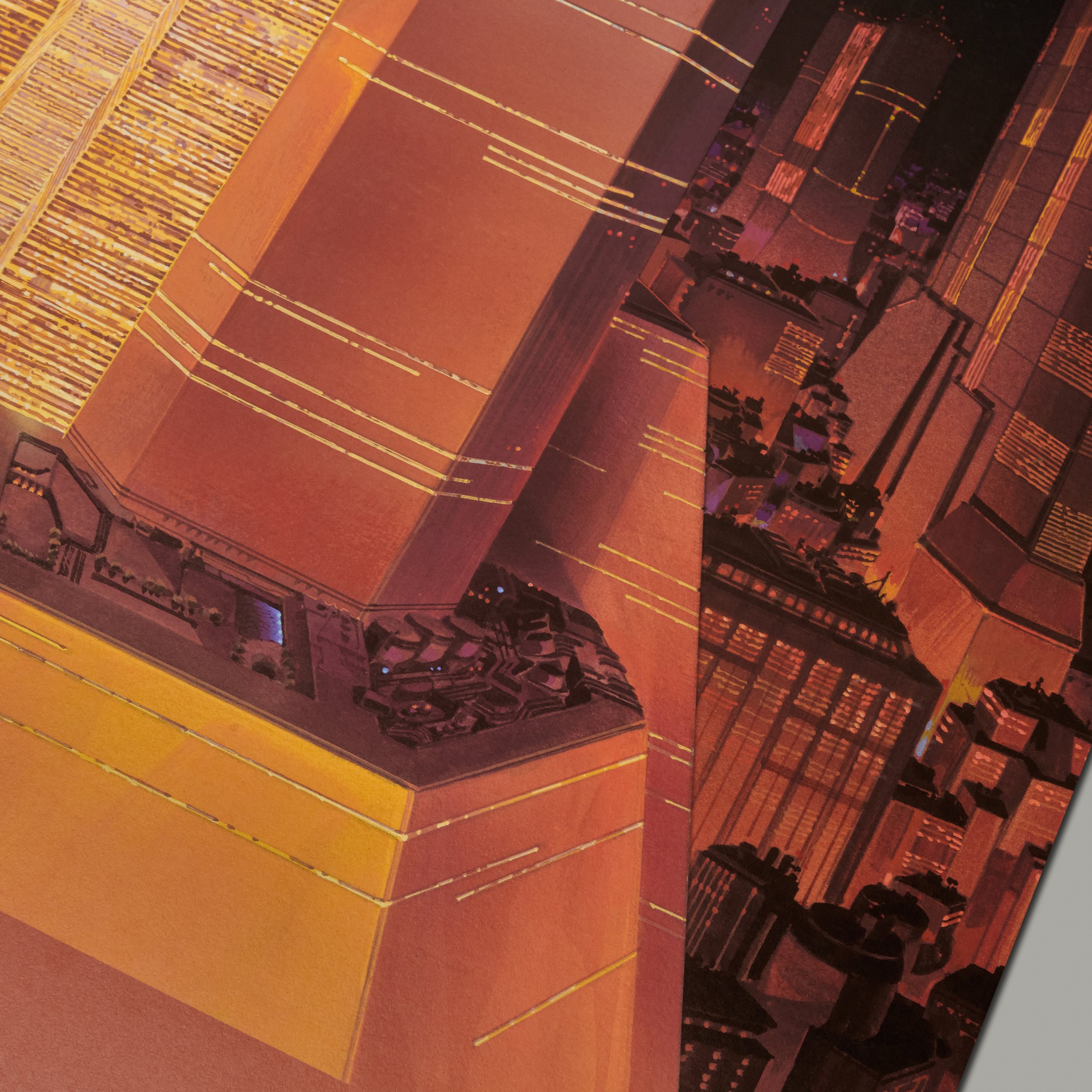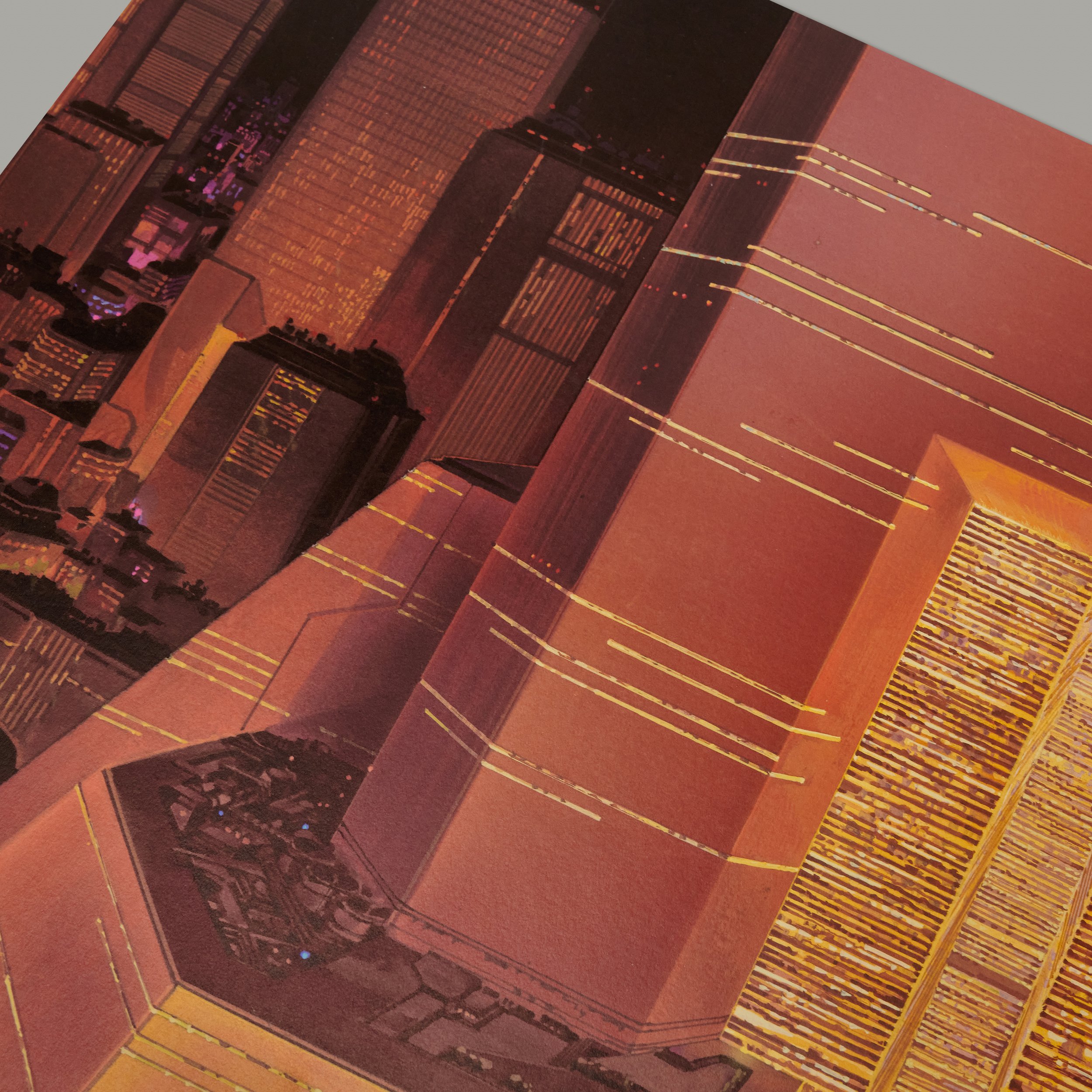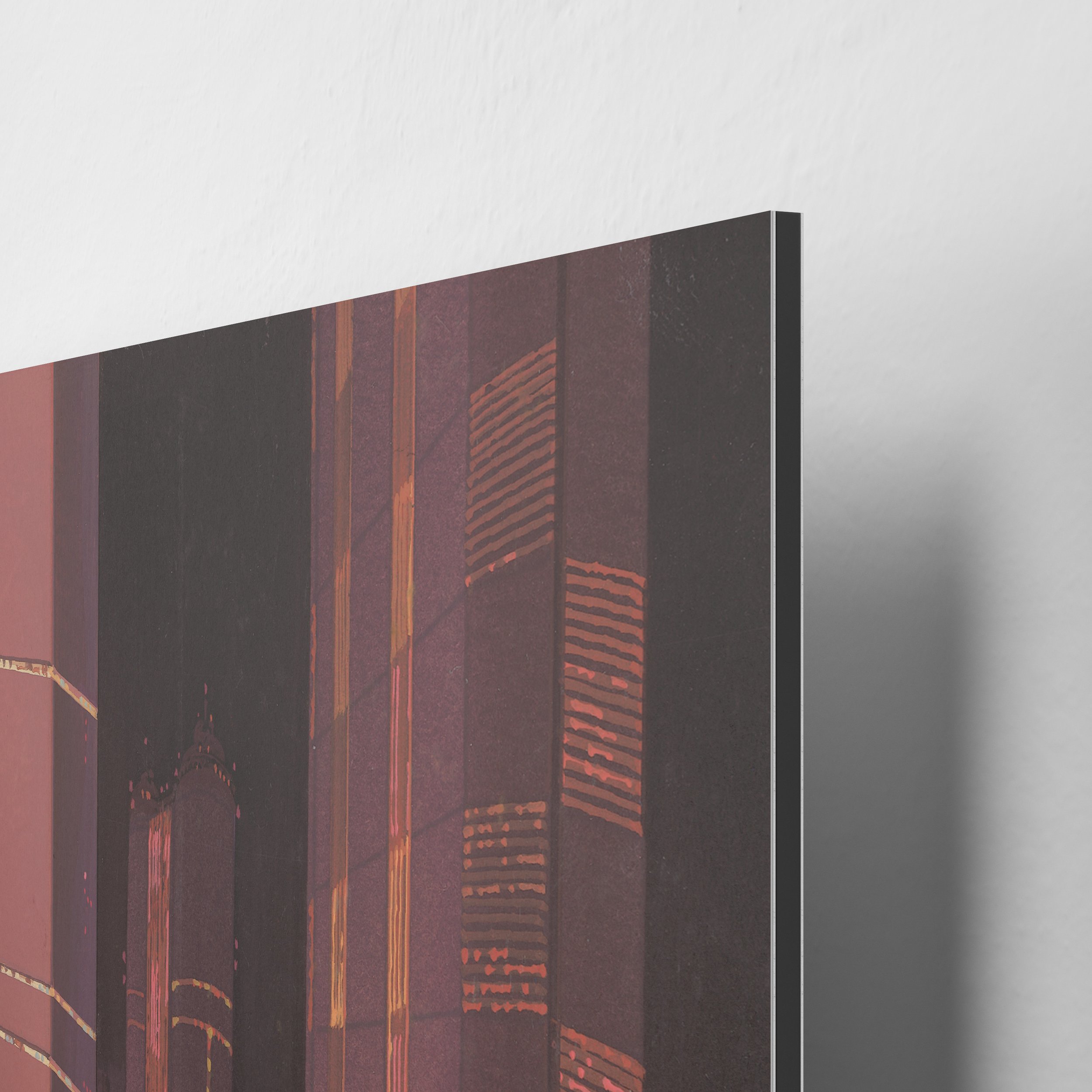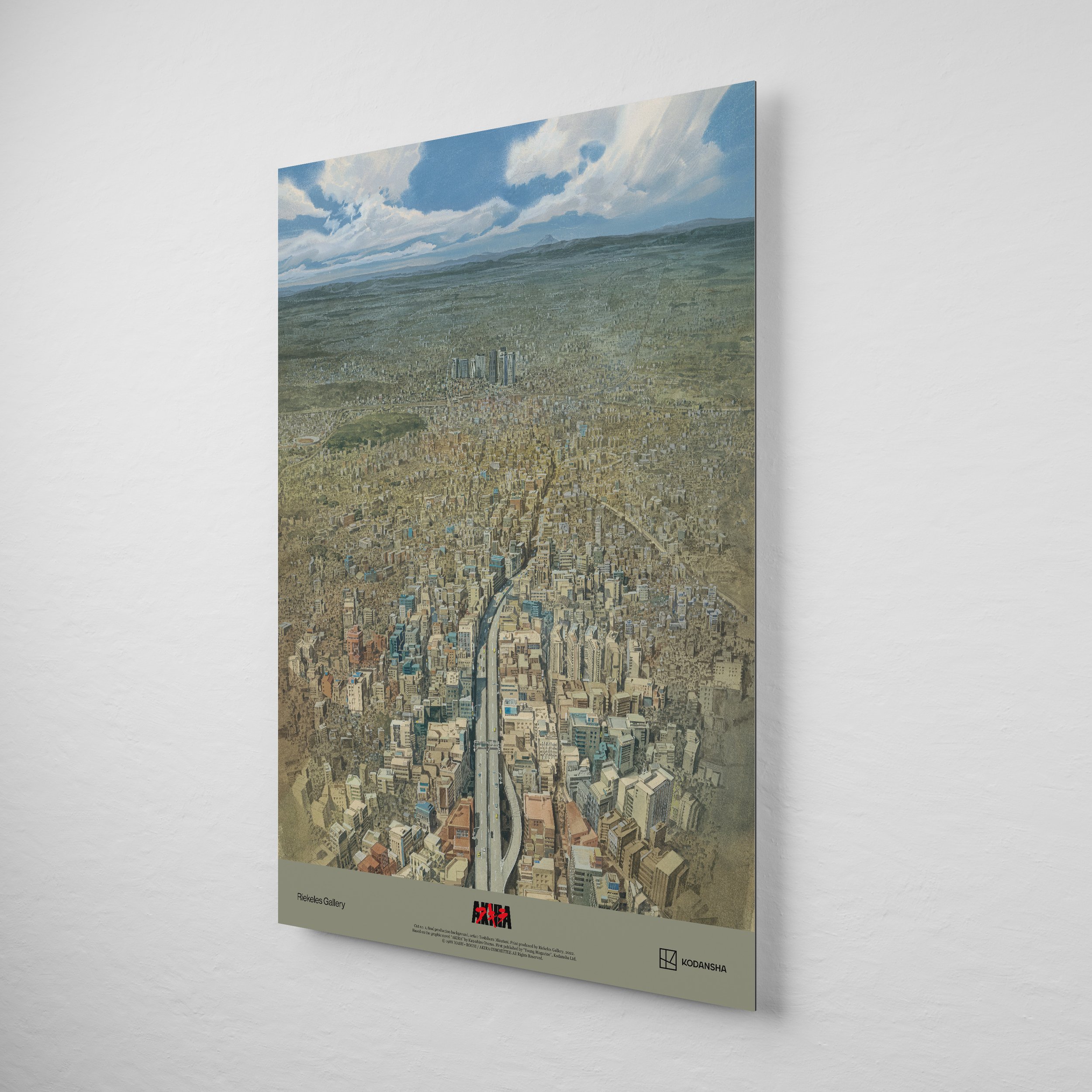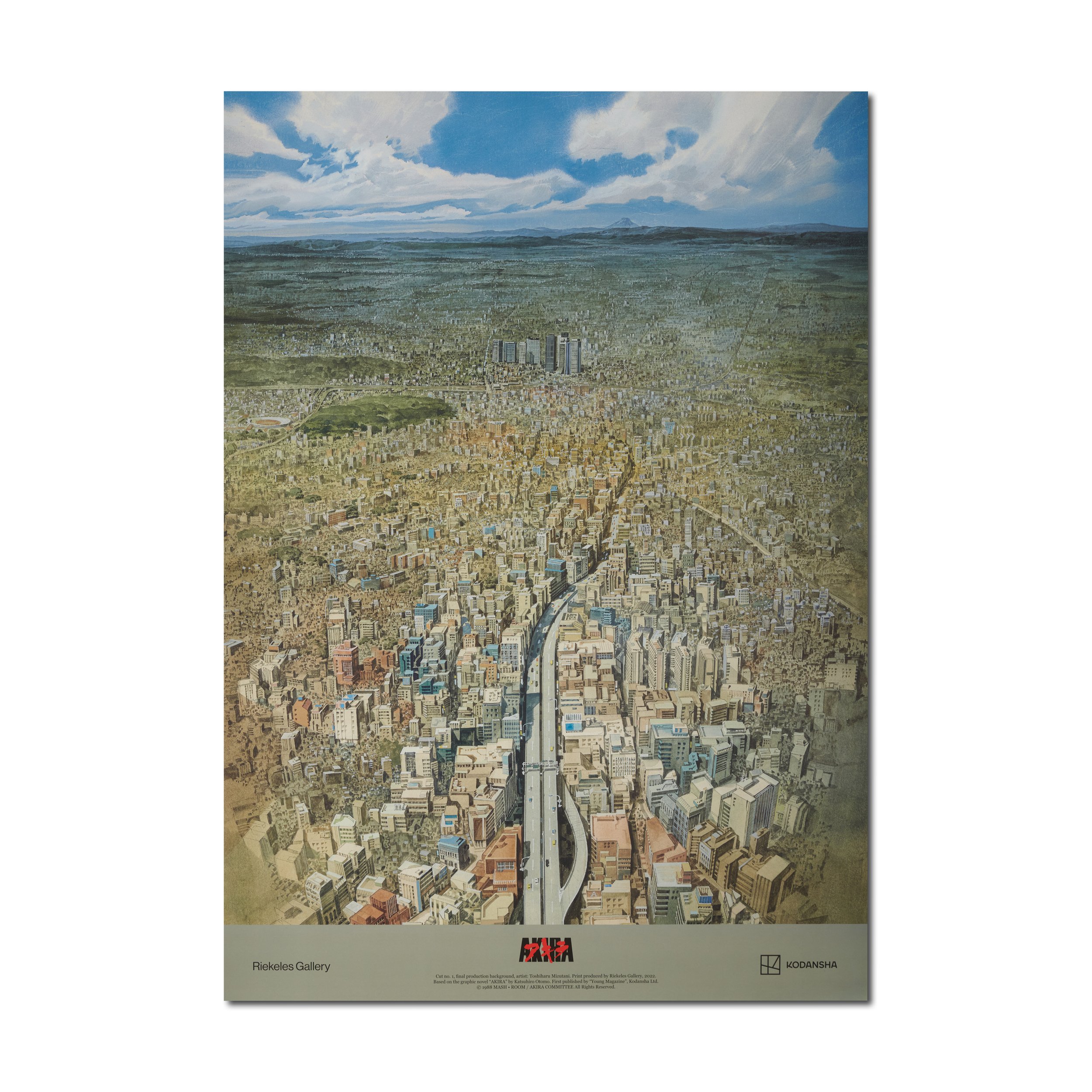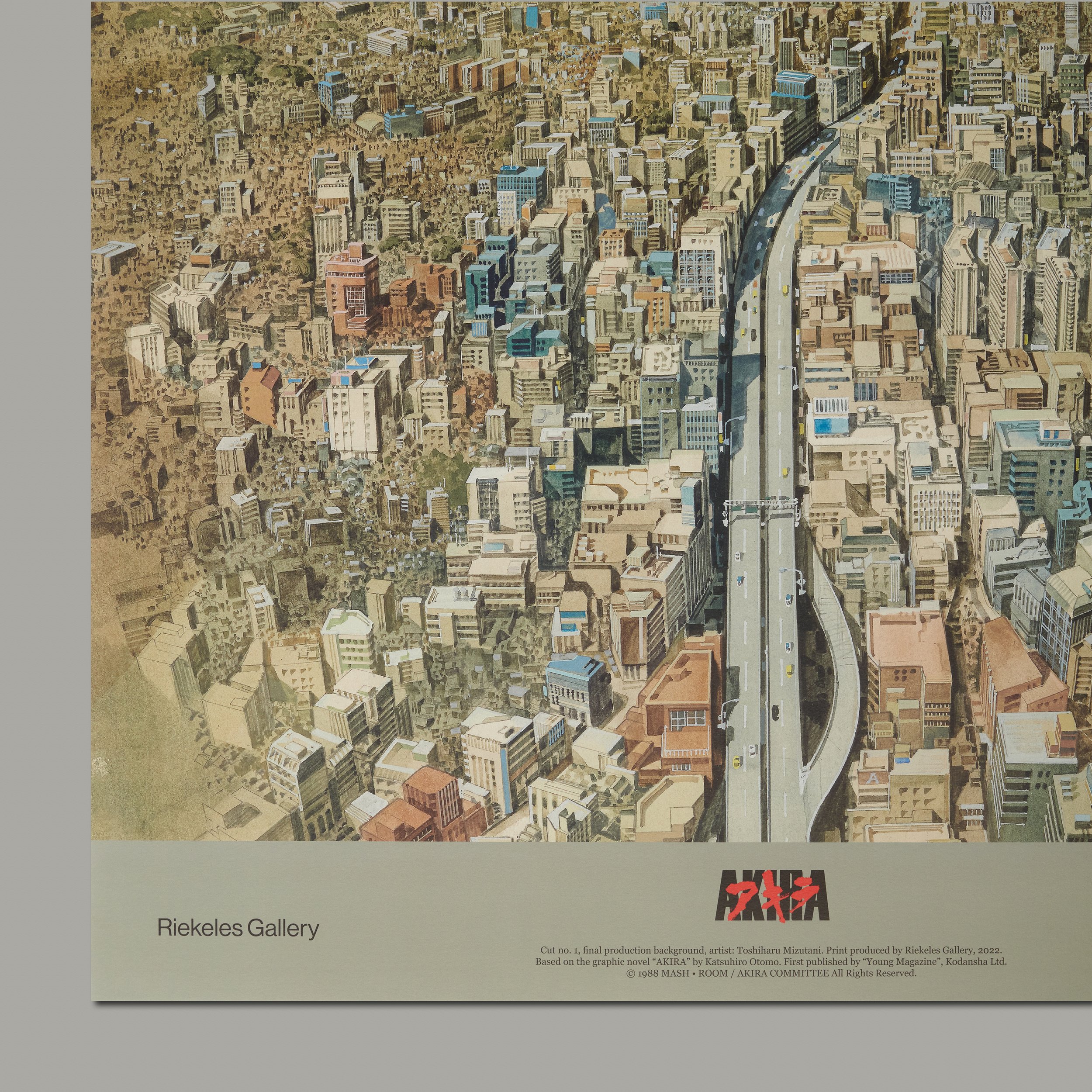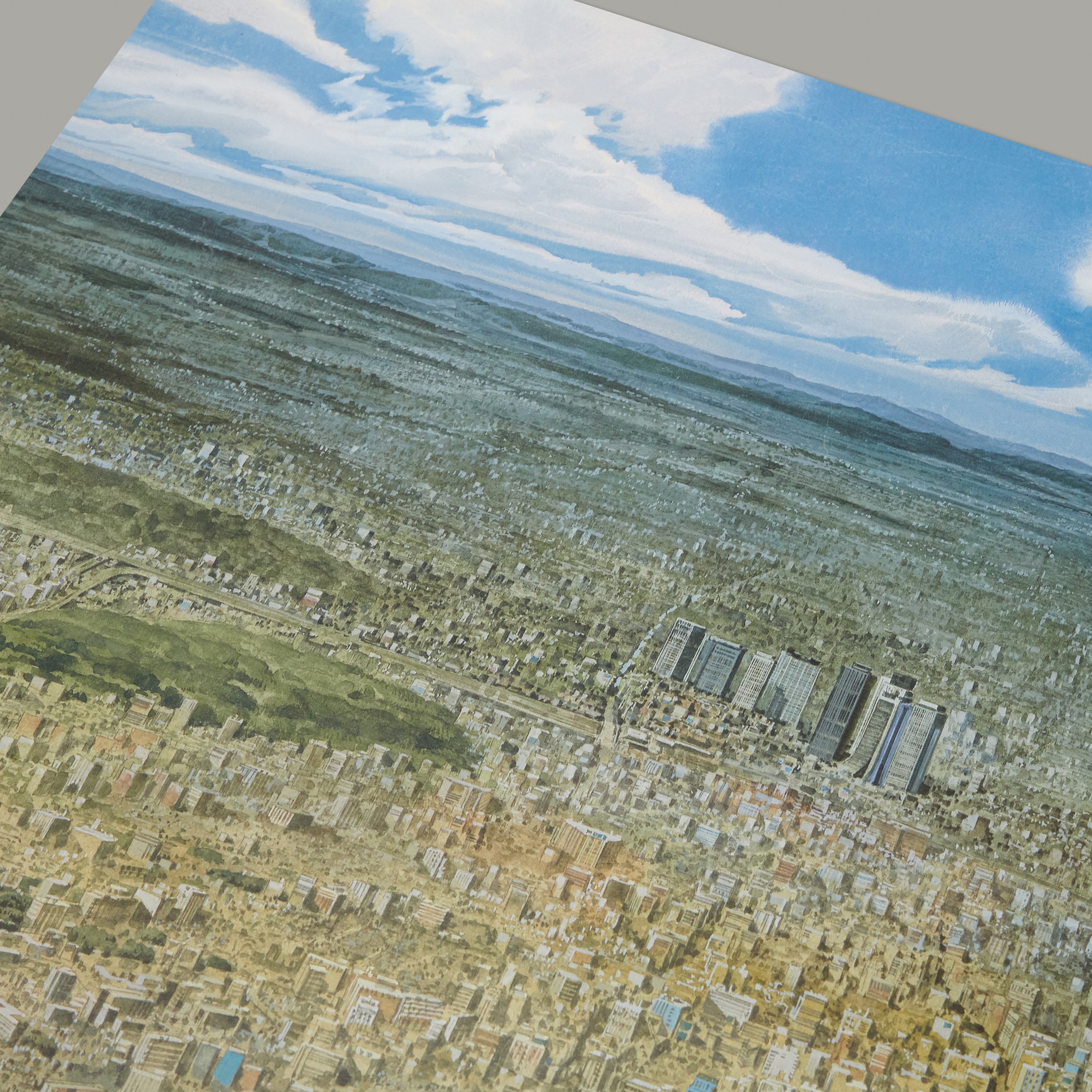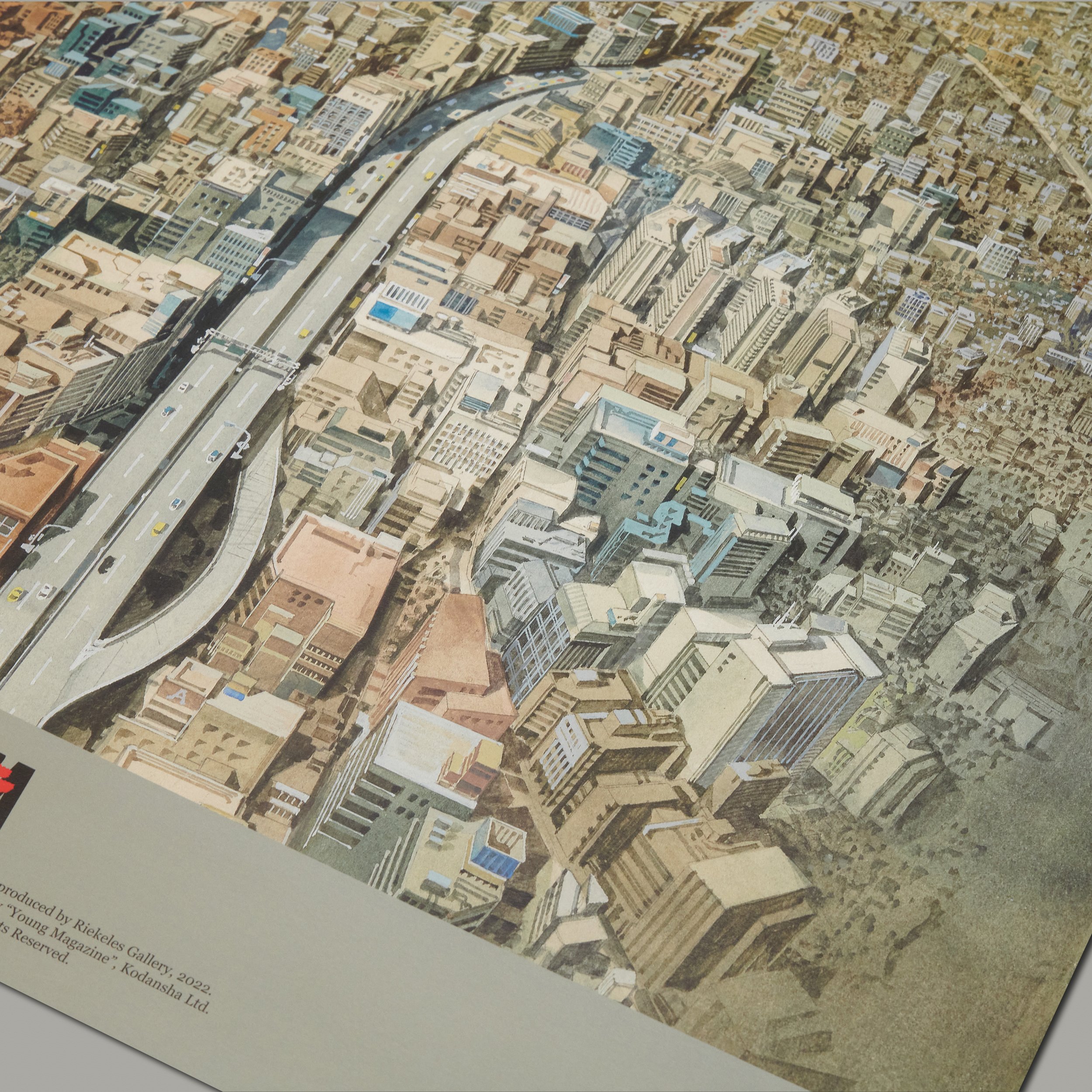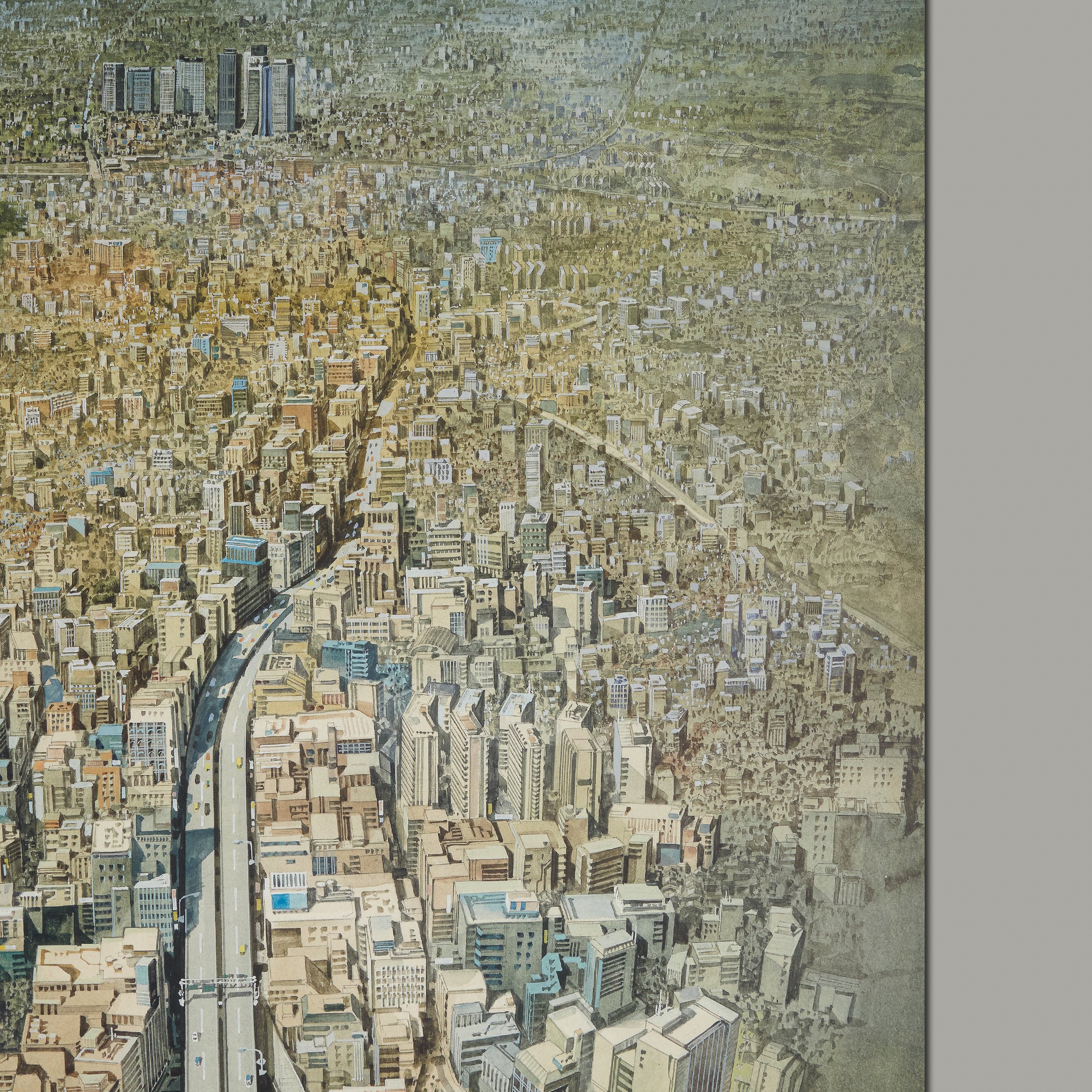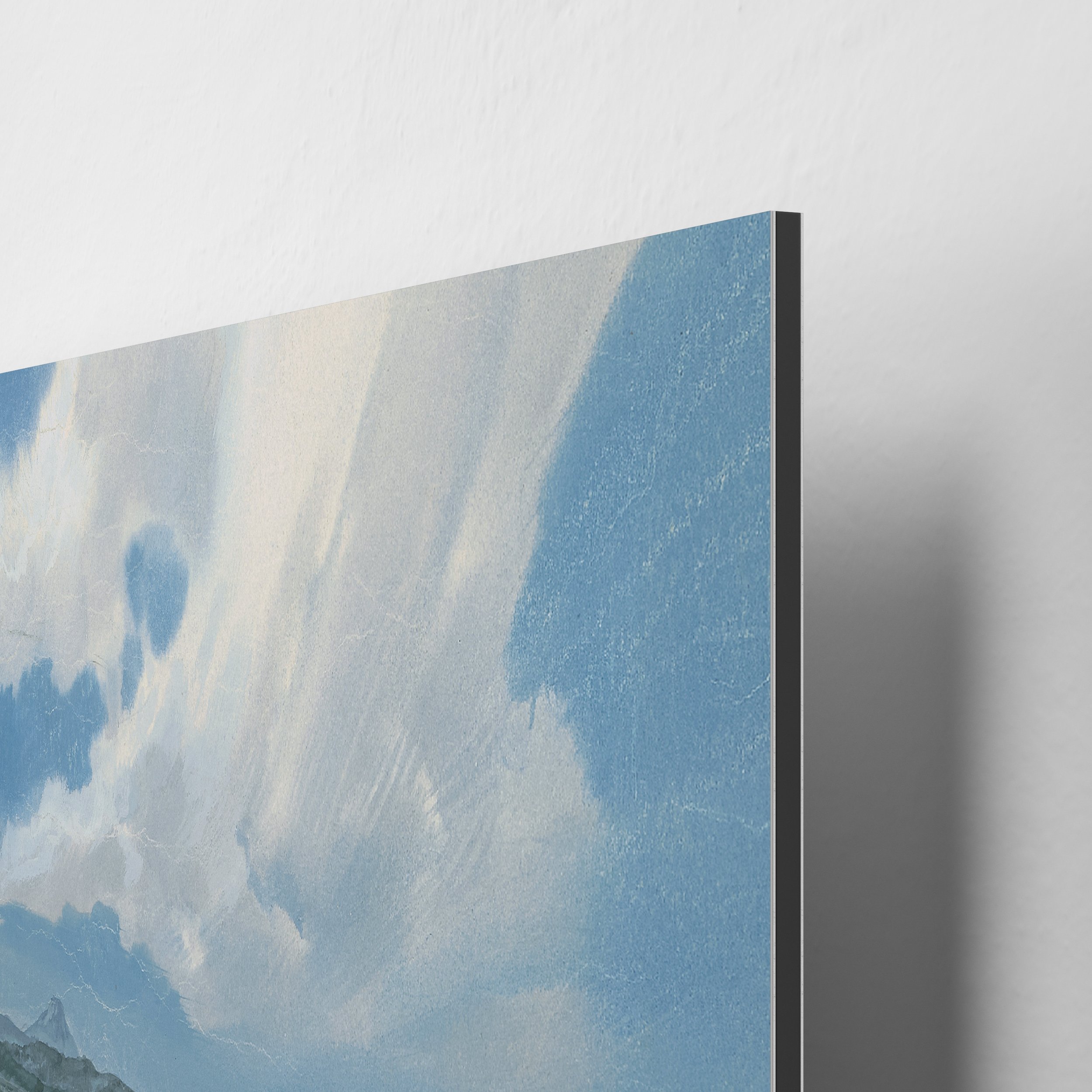The last three images show the poster mounted on a panel. See our blog post for more information on this product option. We also created a guide on how to set up our custom made picture hooks.
This is the last painted background for AKIRA. It is not the last cut of the feature but the last “realistic” backdrop.
Painted by Hiroshi Ohno this piece consists of 4 layers, painted with poster color on paper and transparent foil (cels).
After the final explosion, Tetsuo’s friends find themselves on the outskirts of Neo Tokyo.
They drive off on their motorcycles into the ruins of the city.
In Japan’s post-war economy, construction and reconstruction have often been placed centre stage. In this so-called “construction state” (doken kokka), large amounts of public money have been used in numerous dam, highway and civic building projects. Whether such projects are necessary or in the public interest is highly questionable. As symbolized by the construction of the new Olympic Stadium and its subsequent destruction, AKIRA expresses the joy and sense of liberation that accompanies cataclysmic devastation, with its tearing down of old institutions.
Layer #1. Base of the book cel setup, painted on paper.
Layer #2. Painted on cel.
Layer #3. Painted on cel.
Layer #4. Painted on paper, cut out and mounted on cel.
Stefan Riekeles explaining the layered structure of the original artwork.


